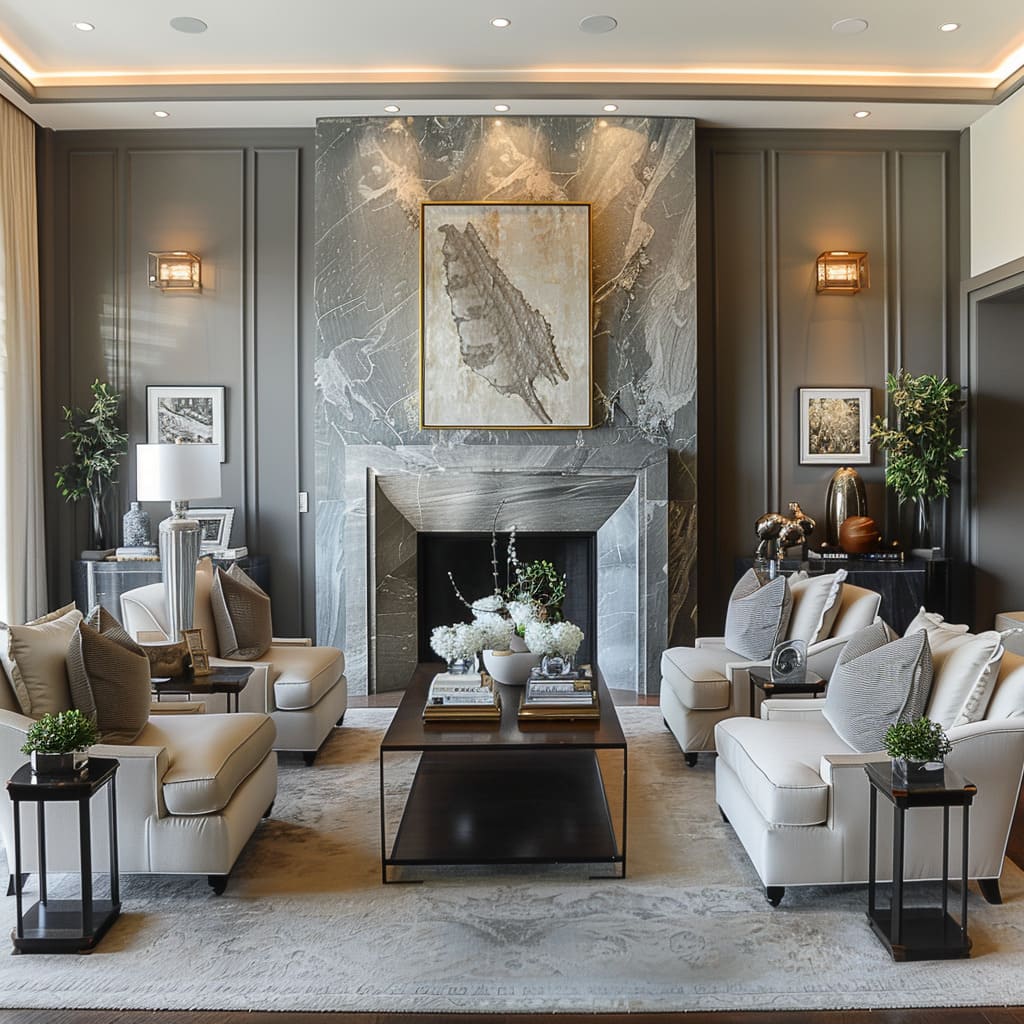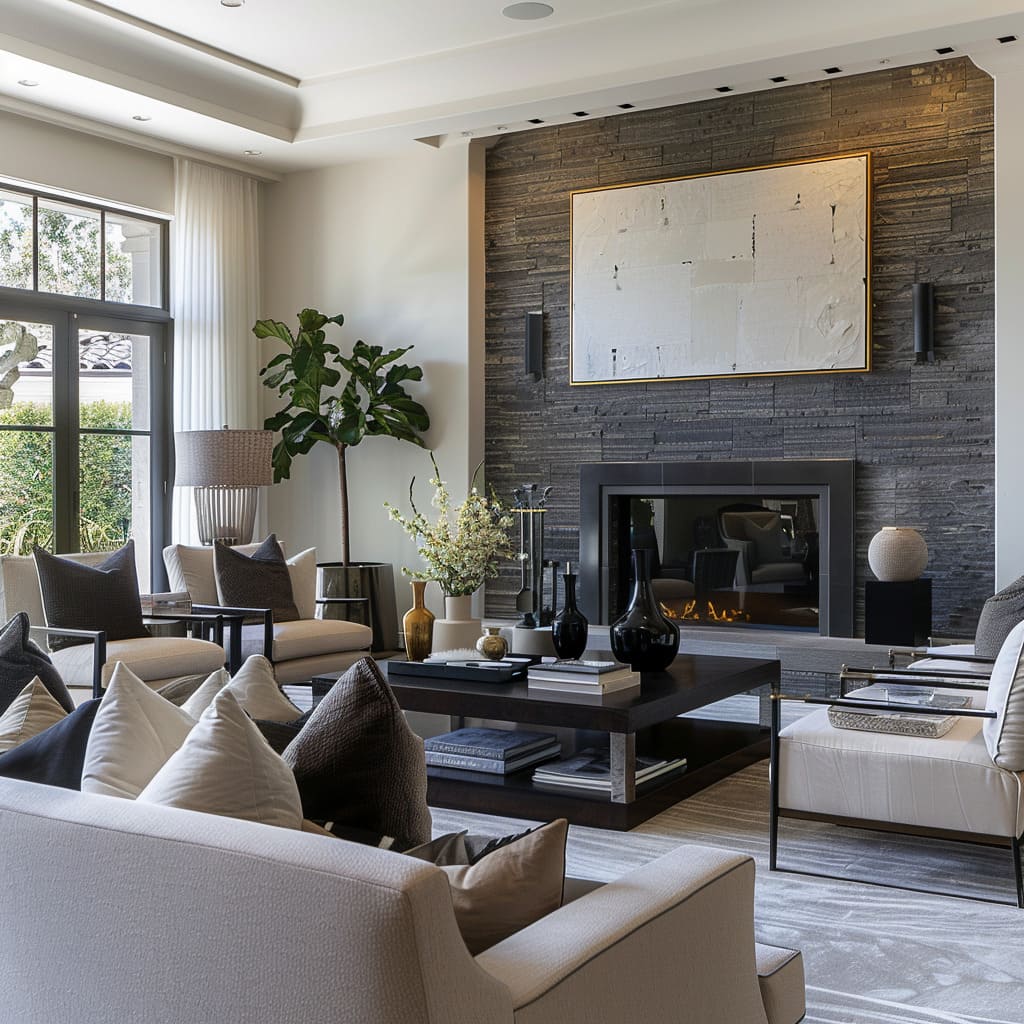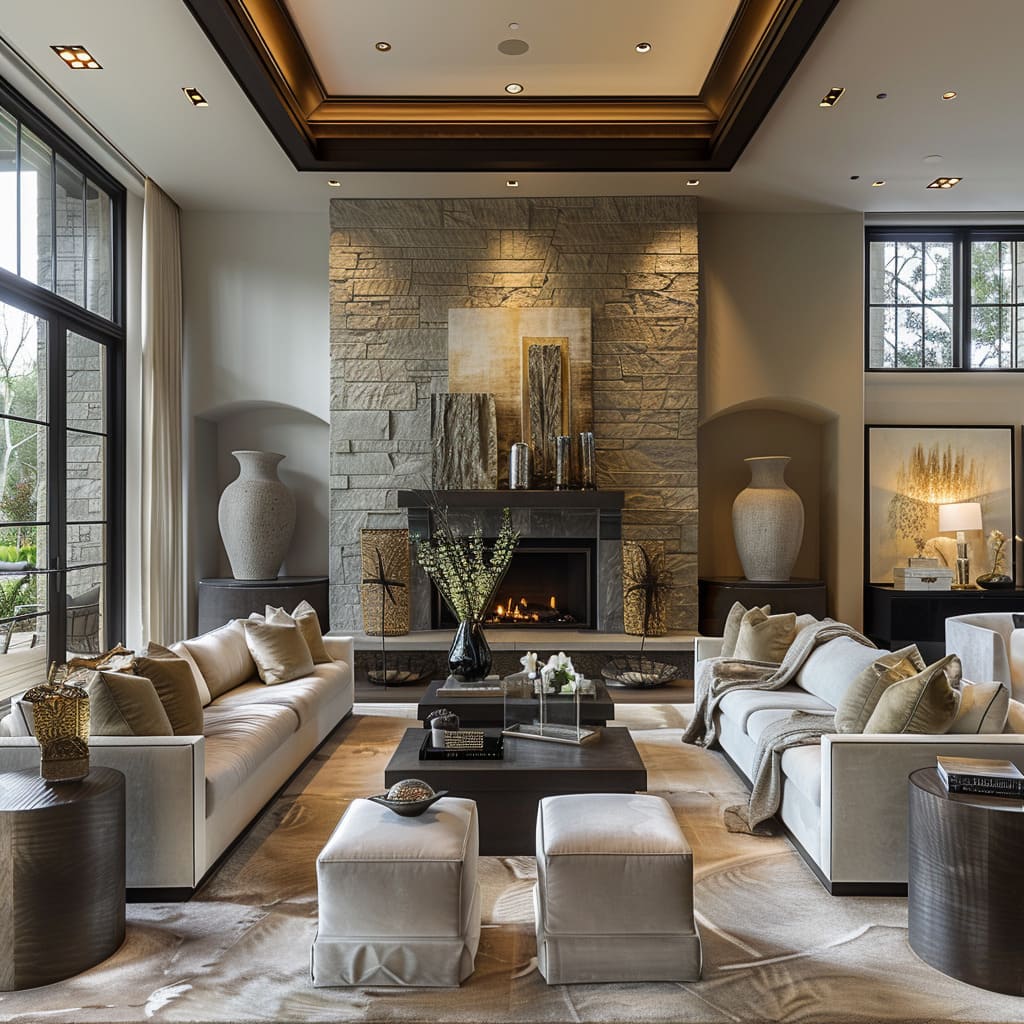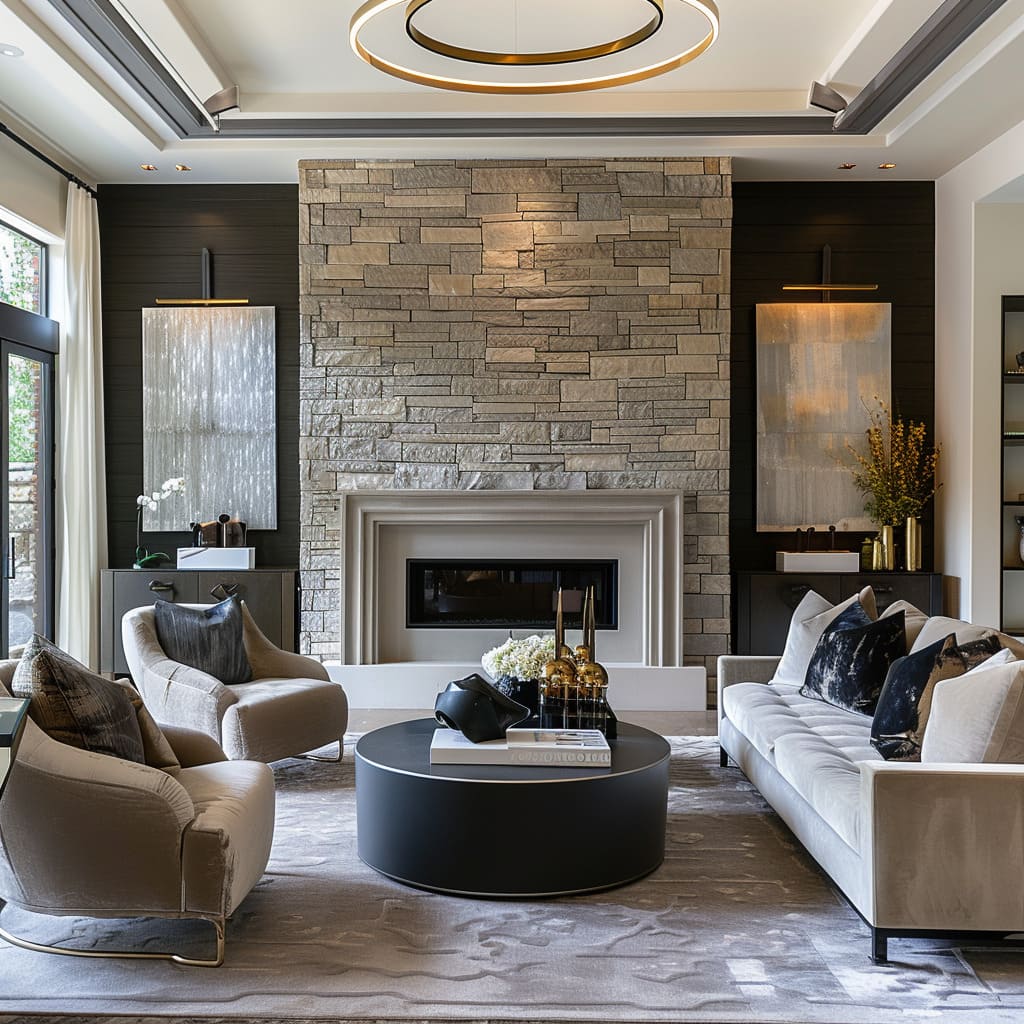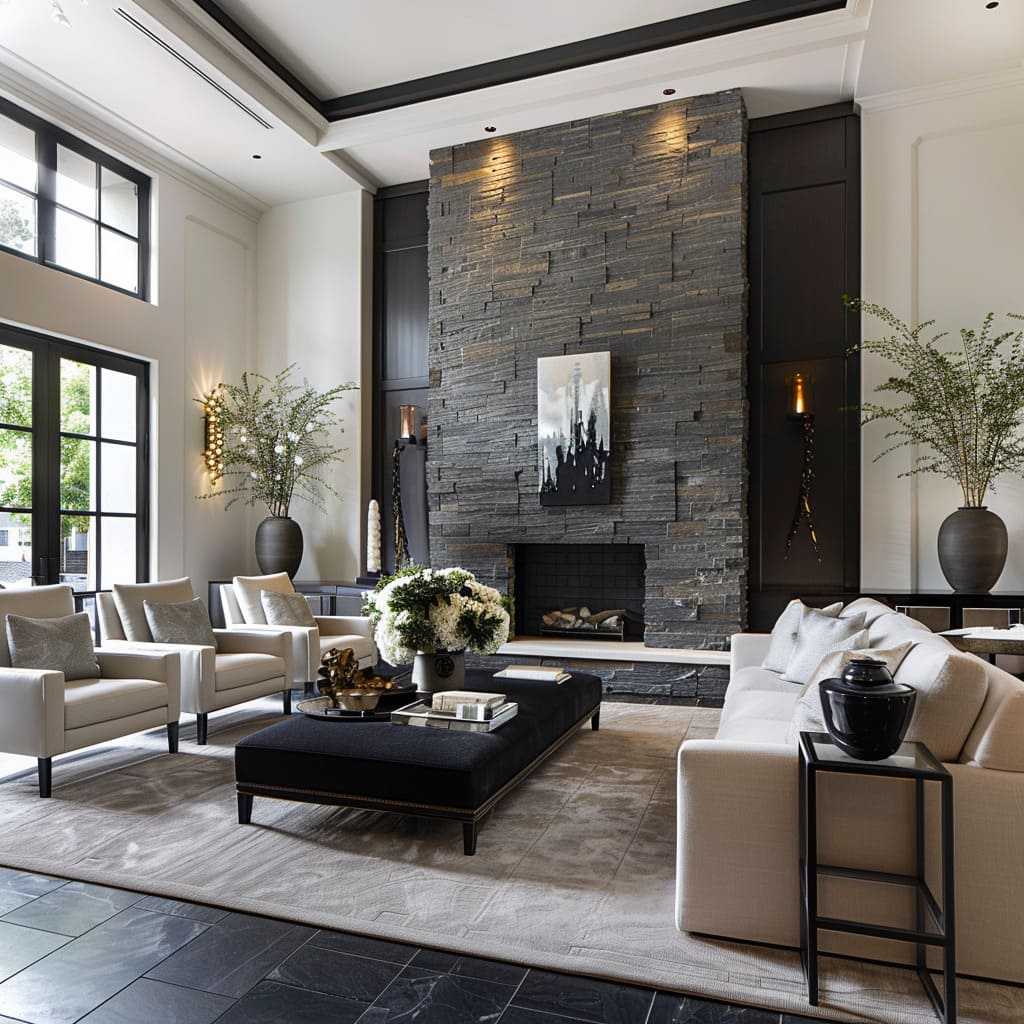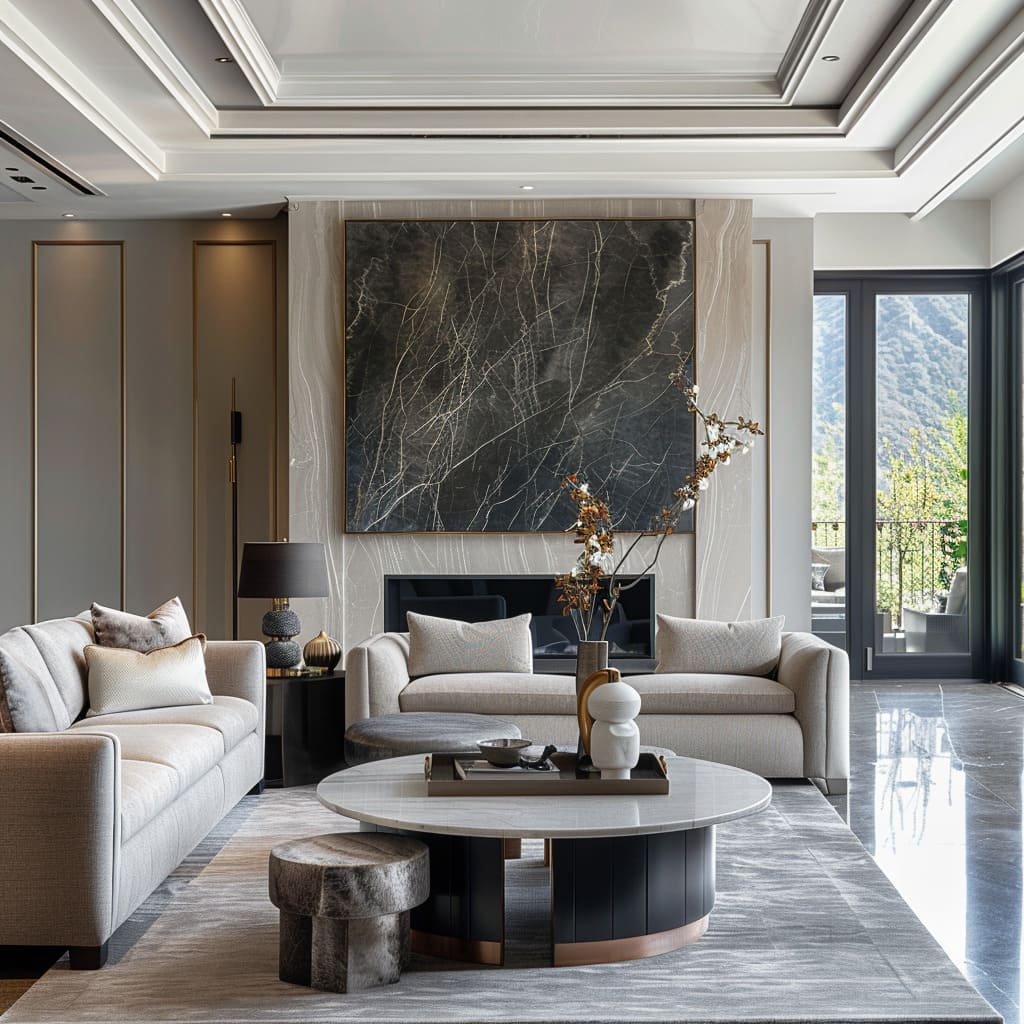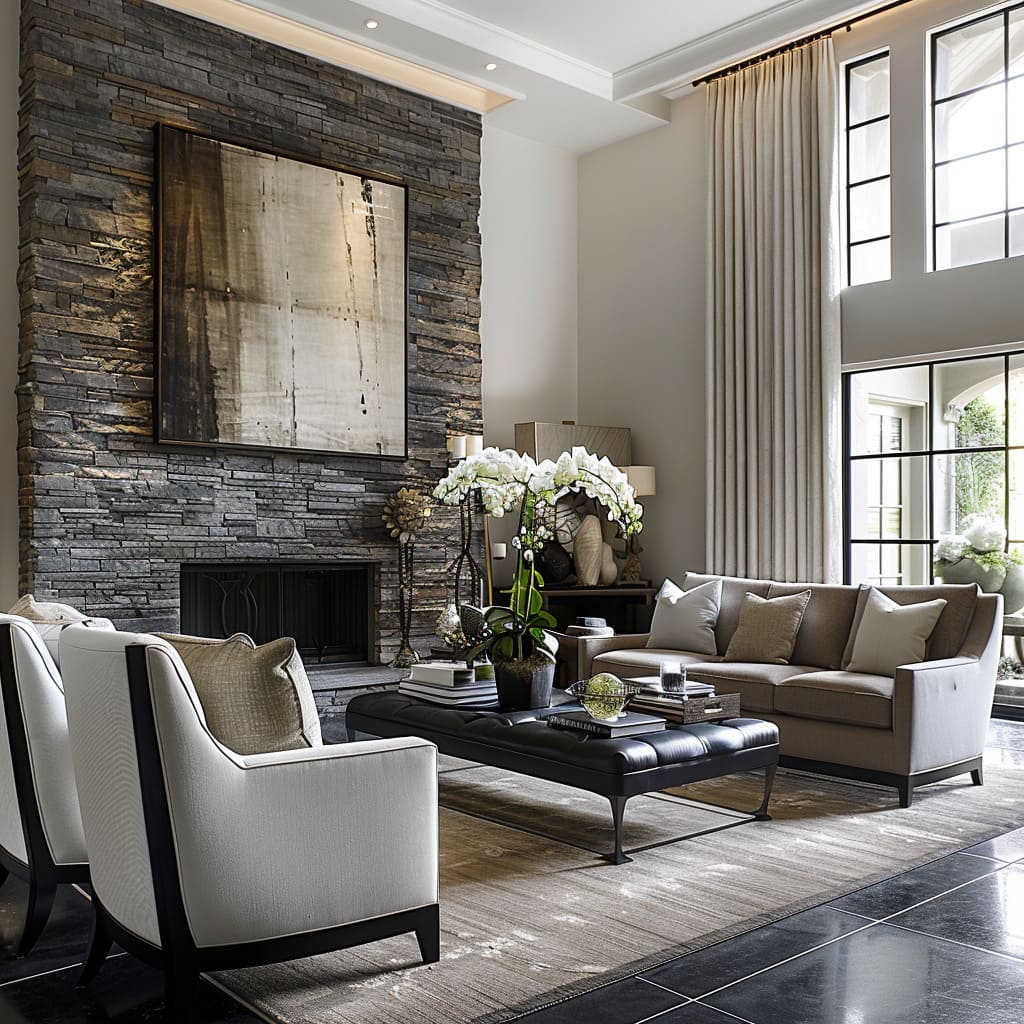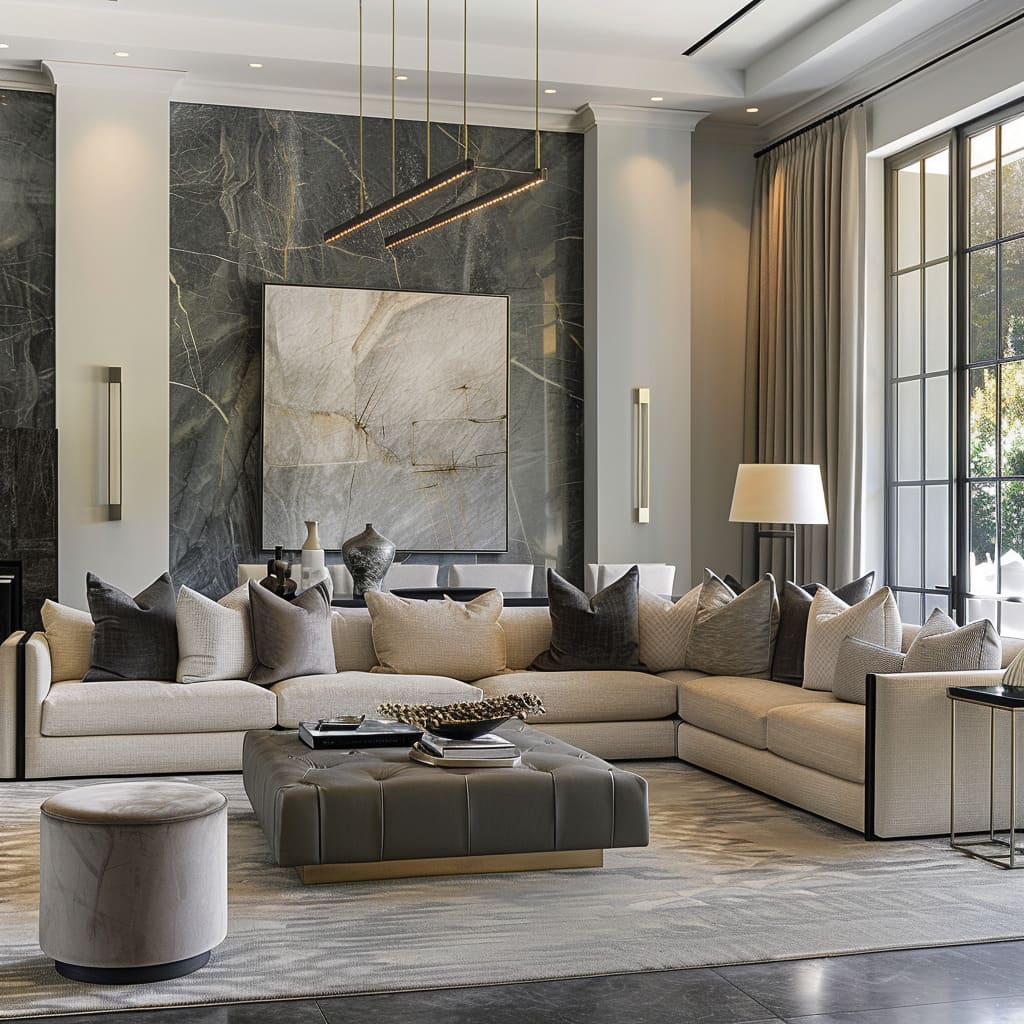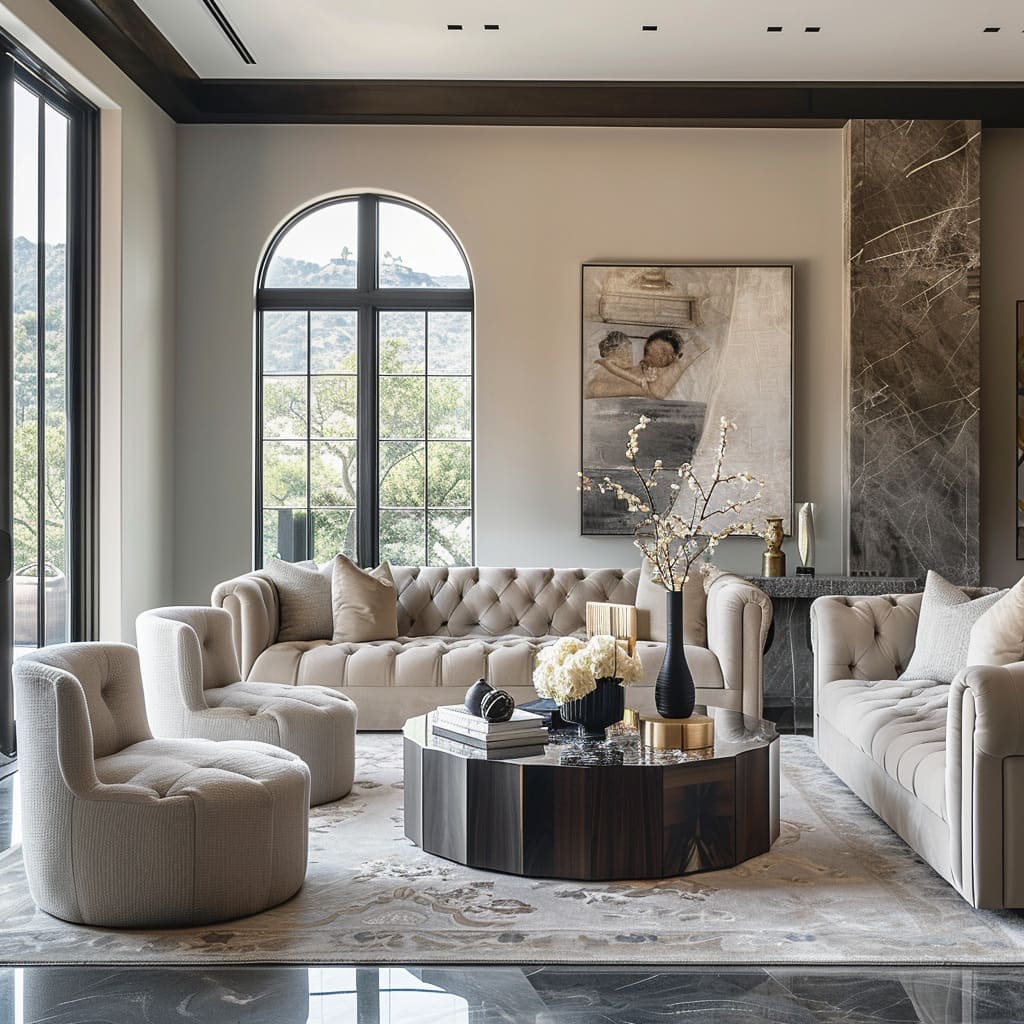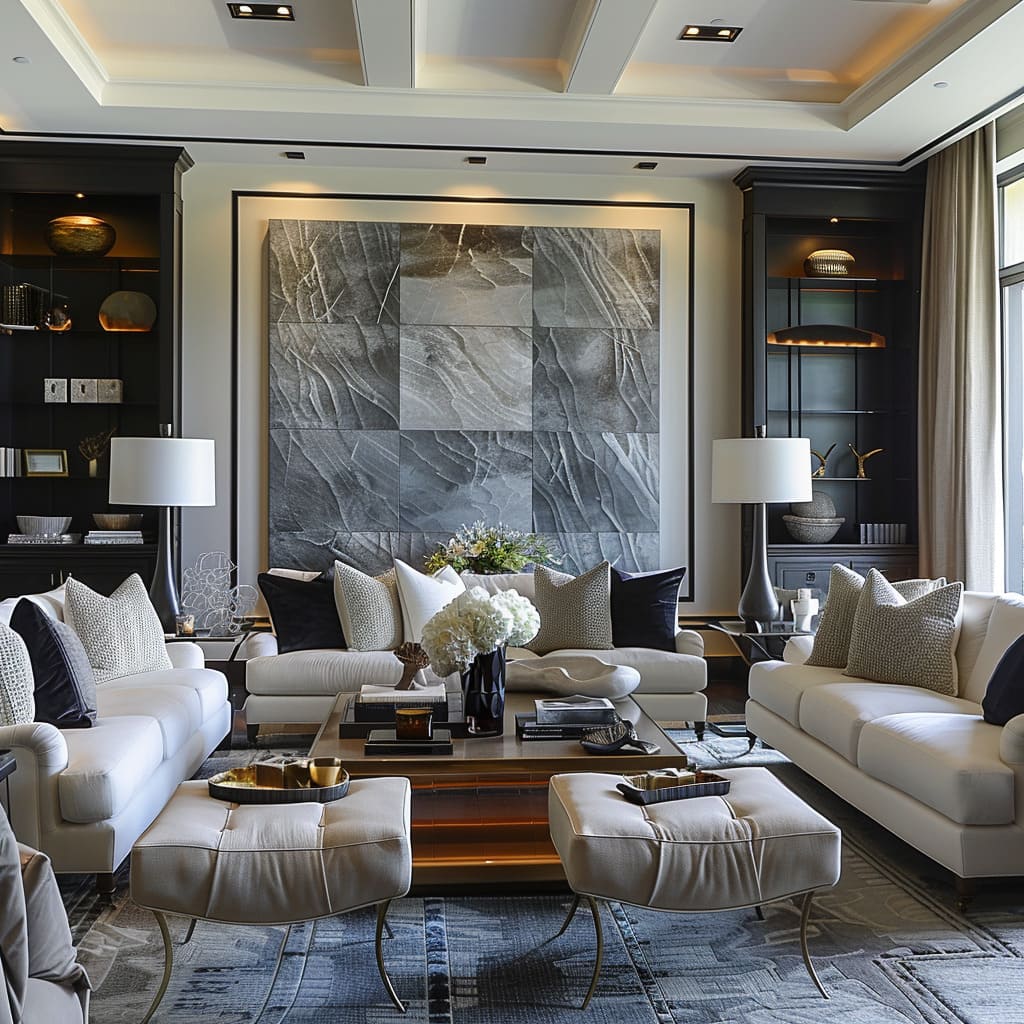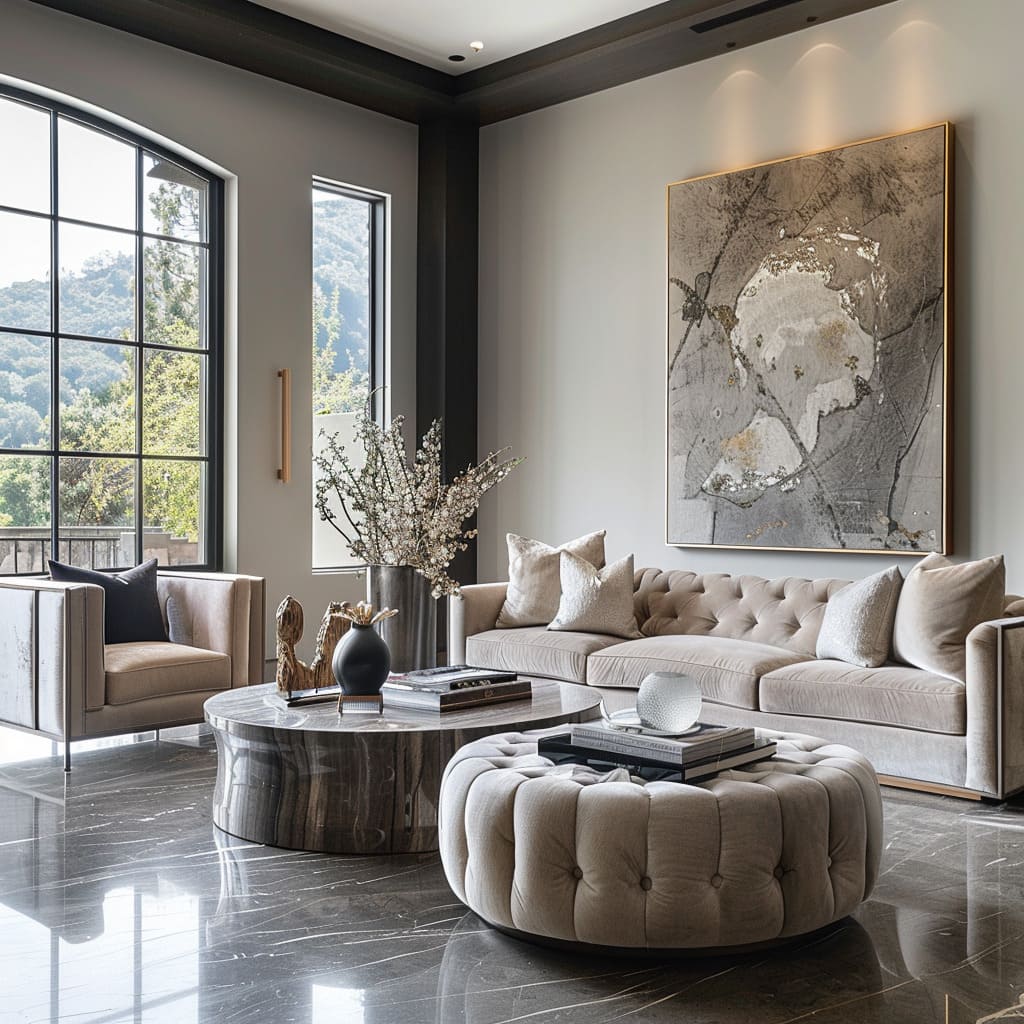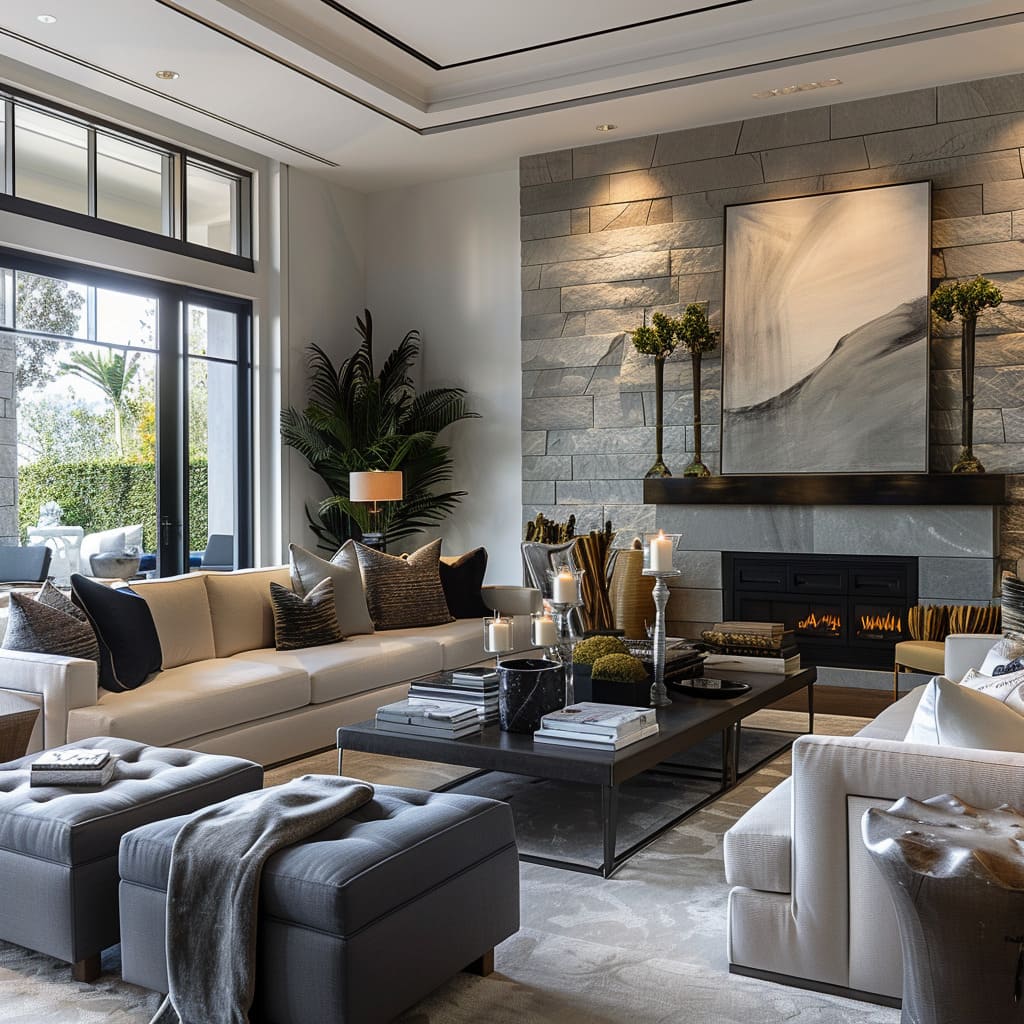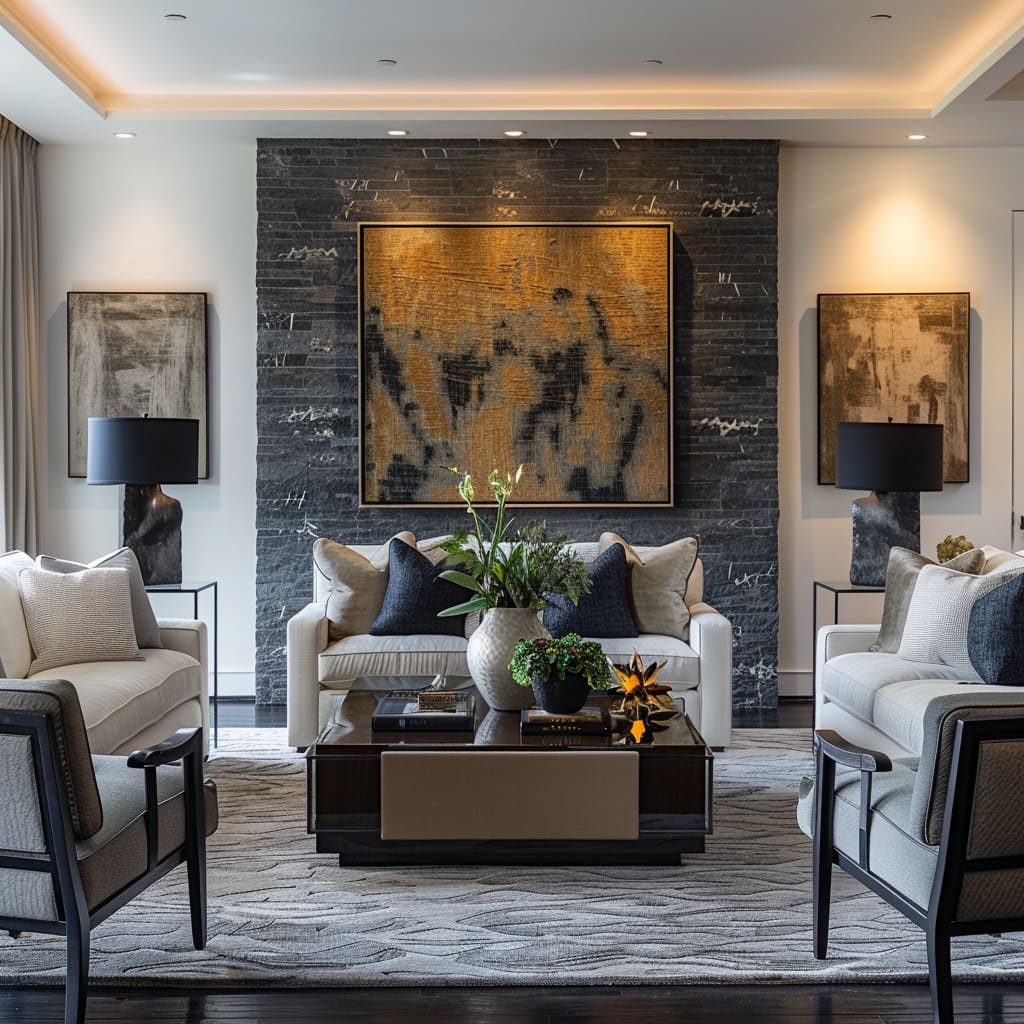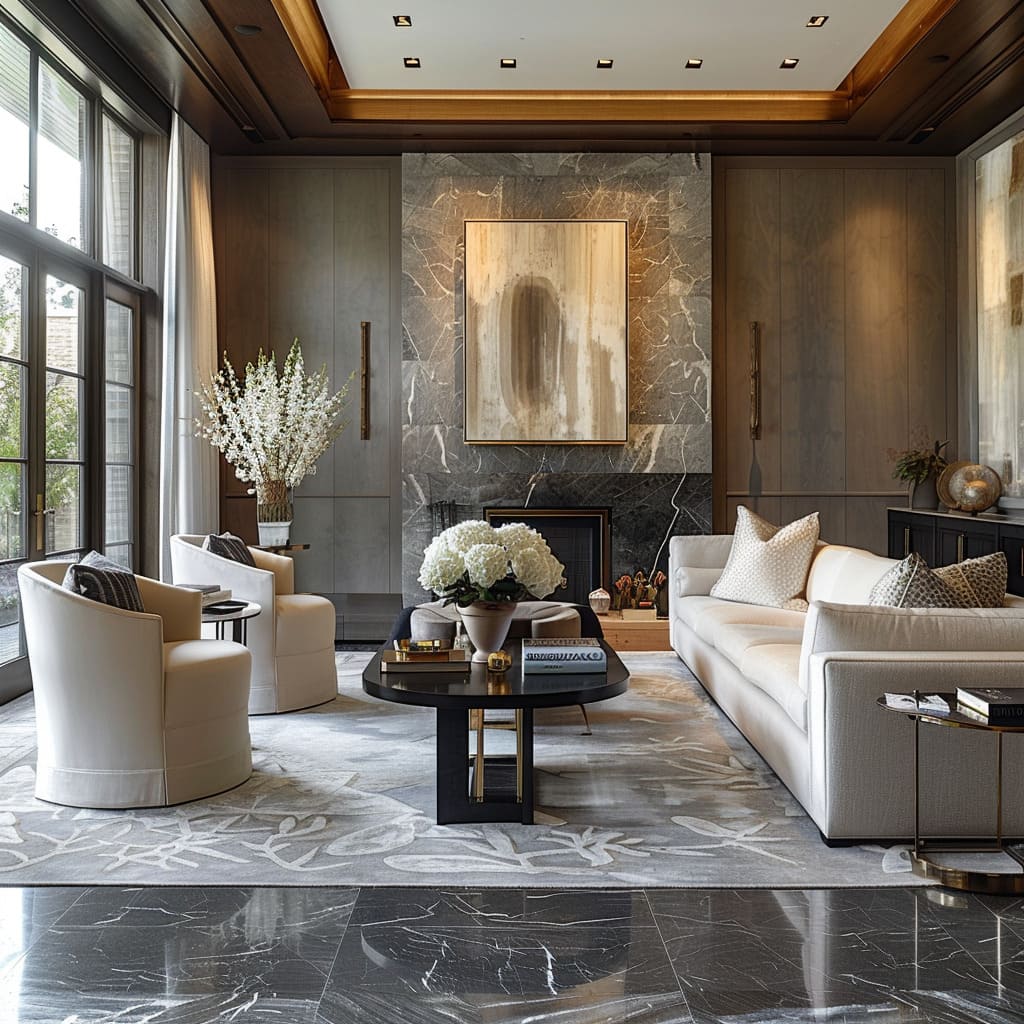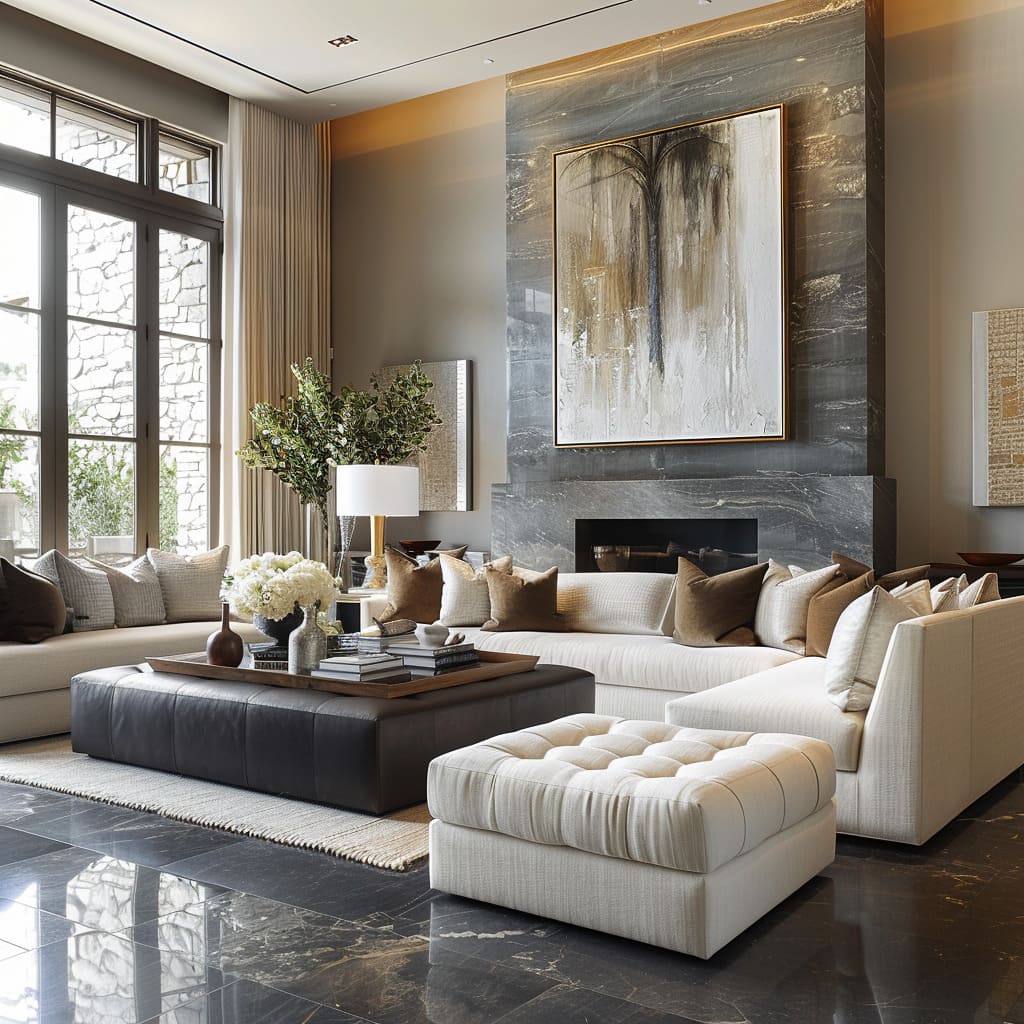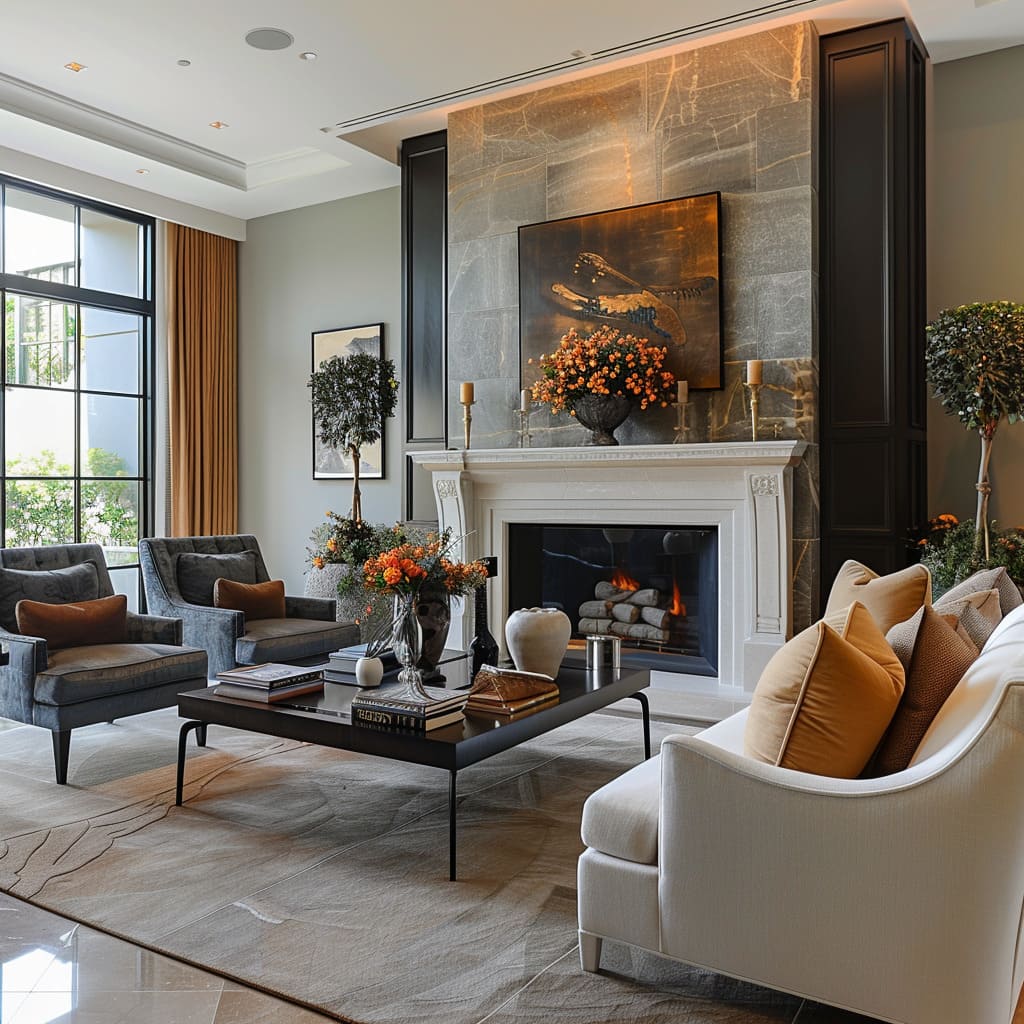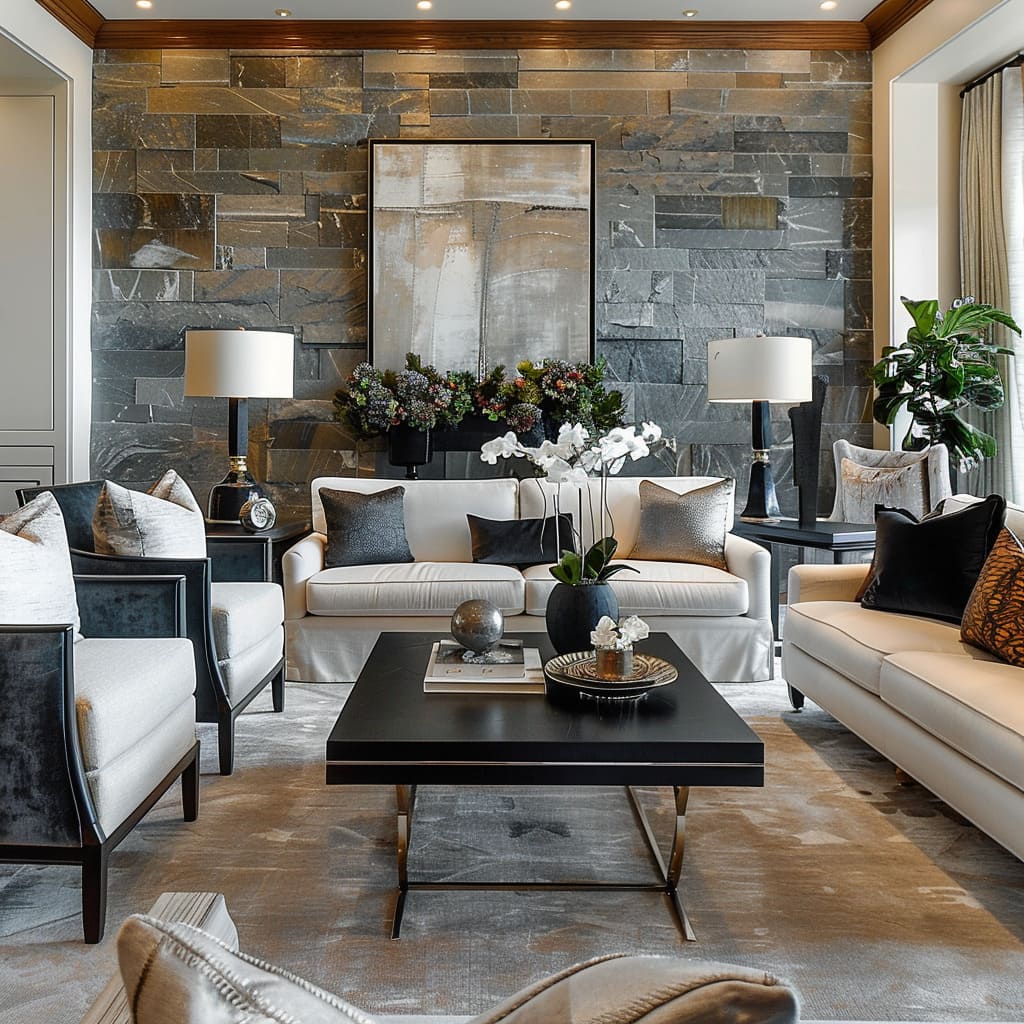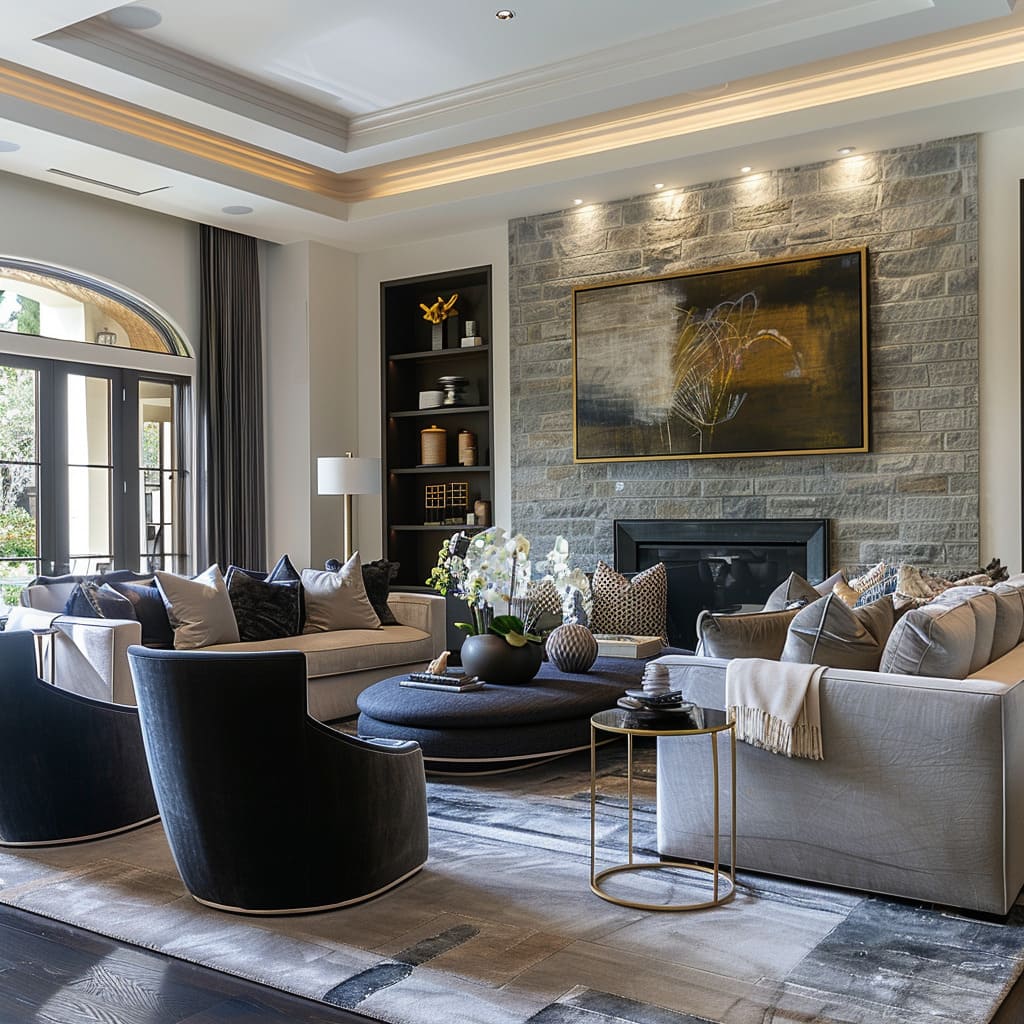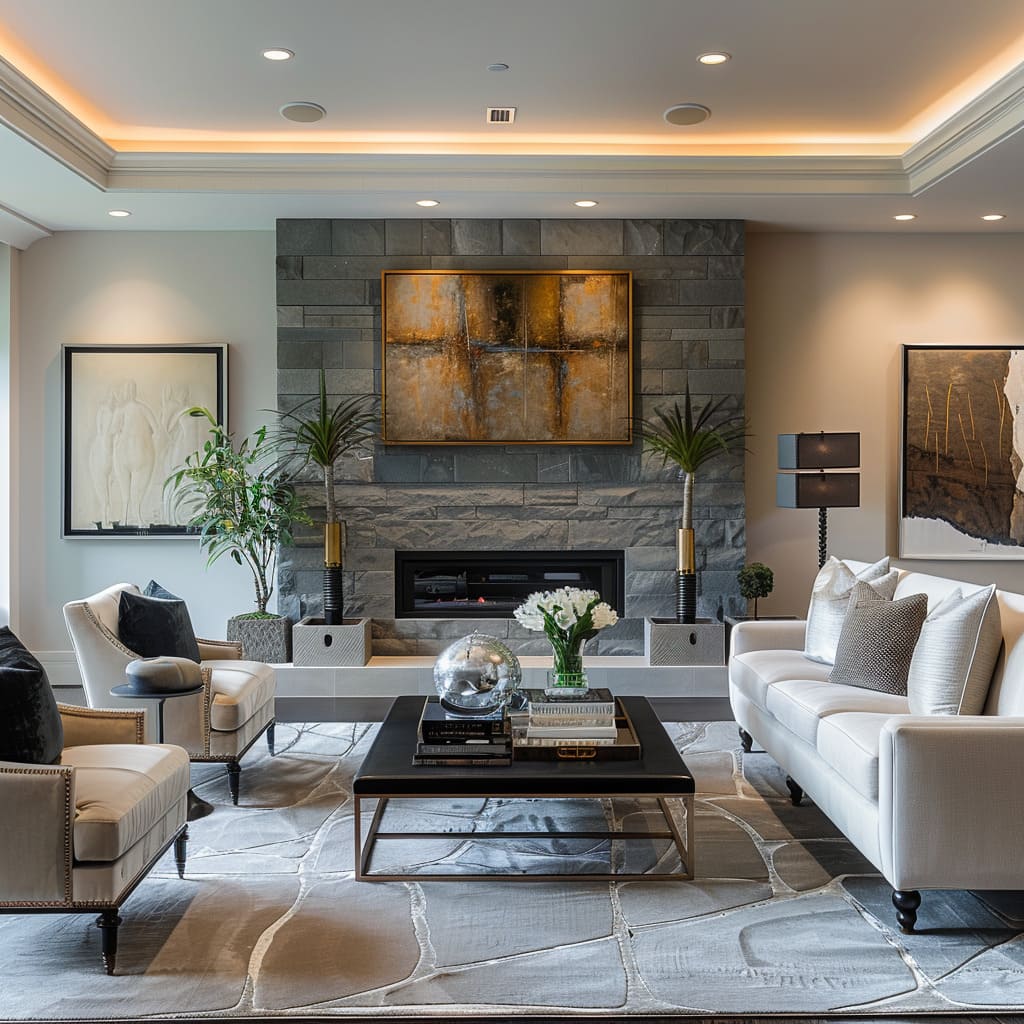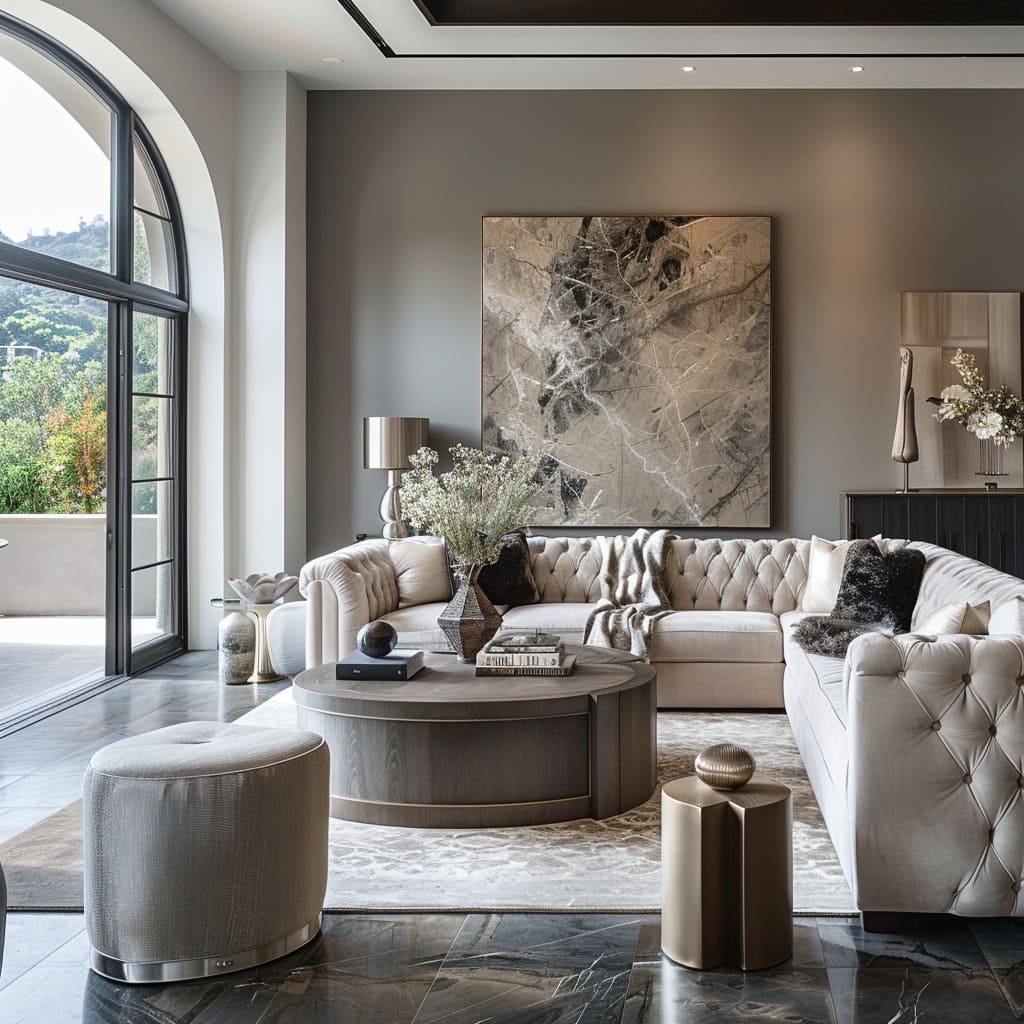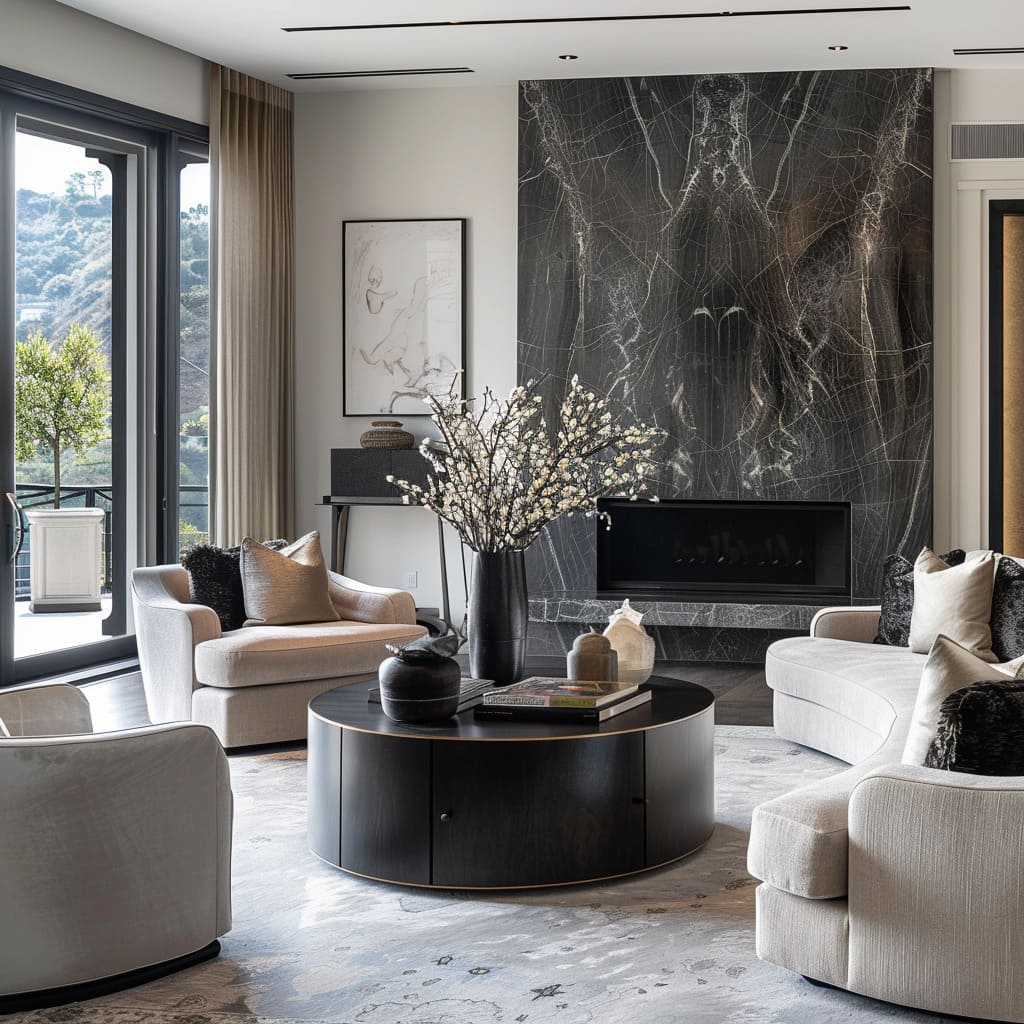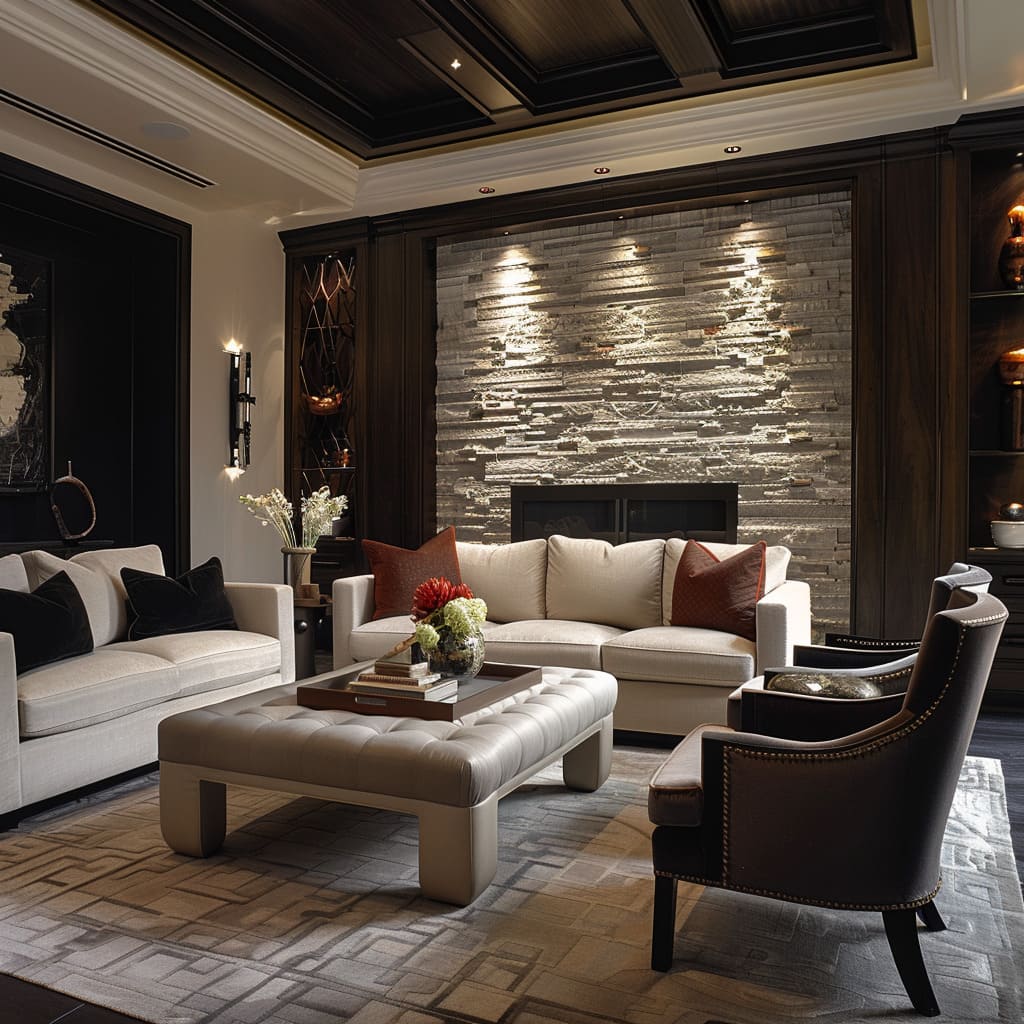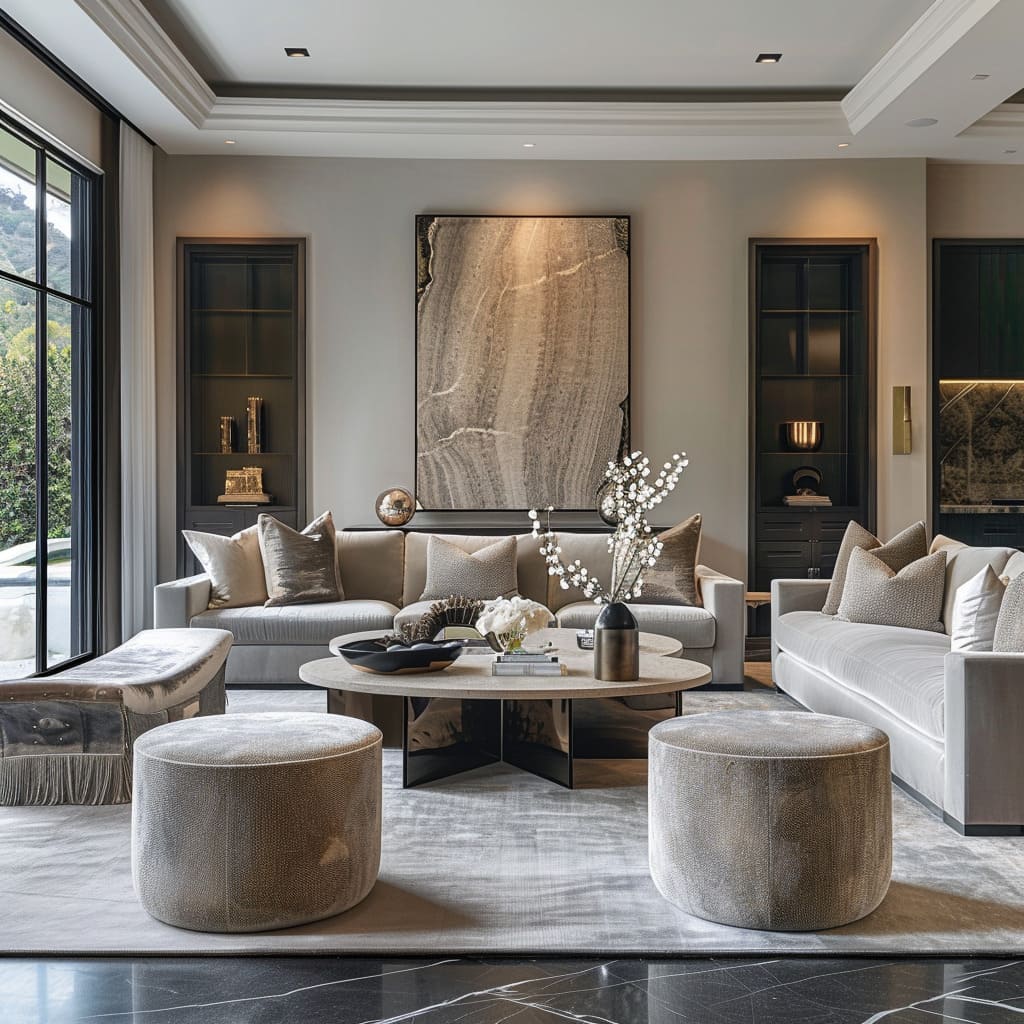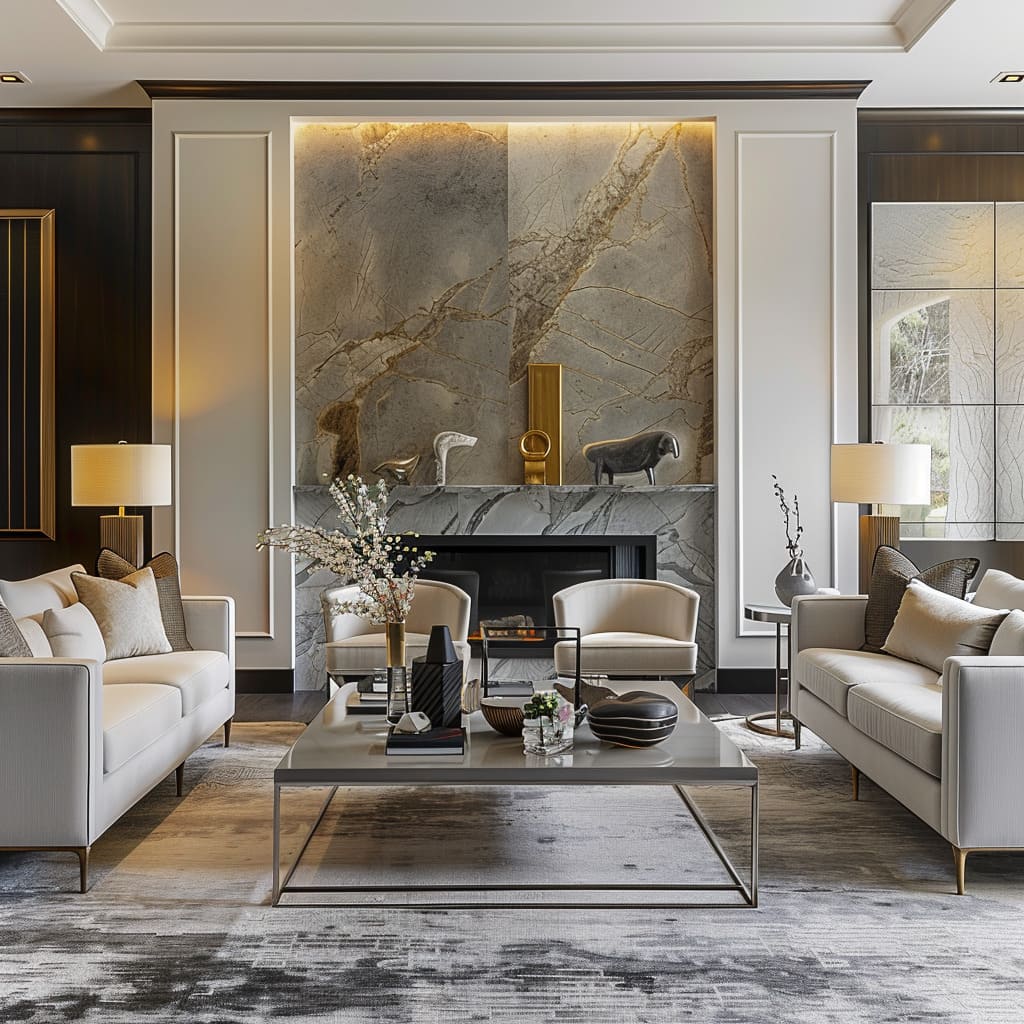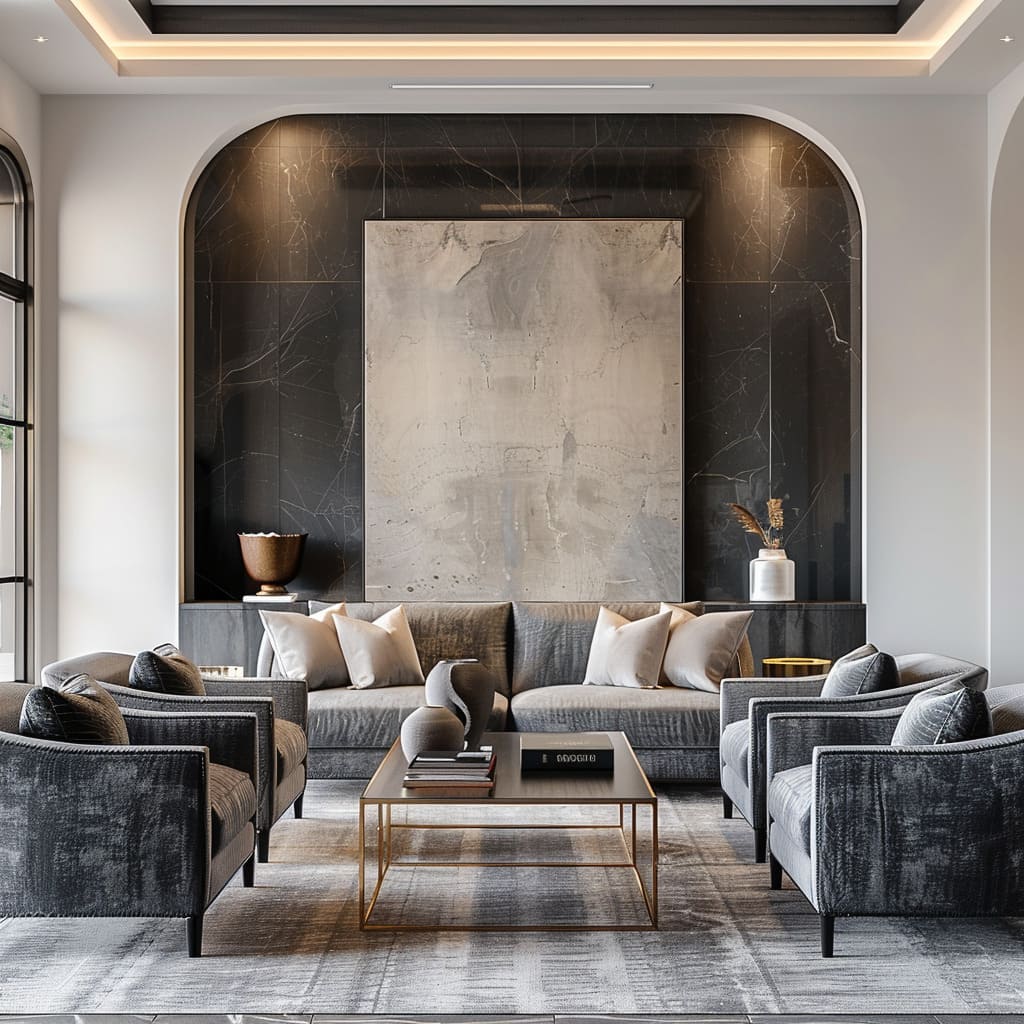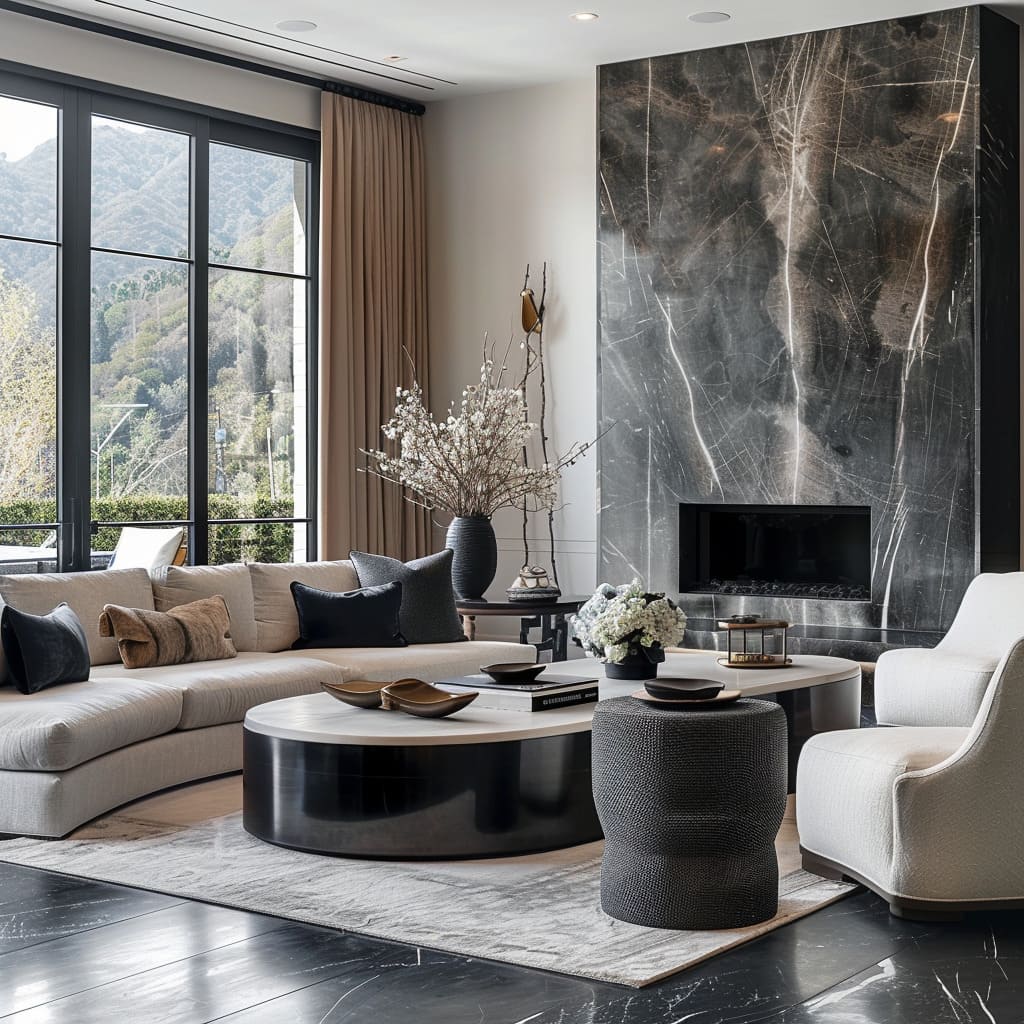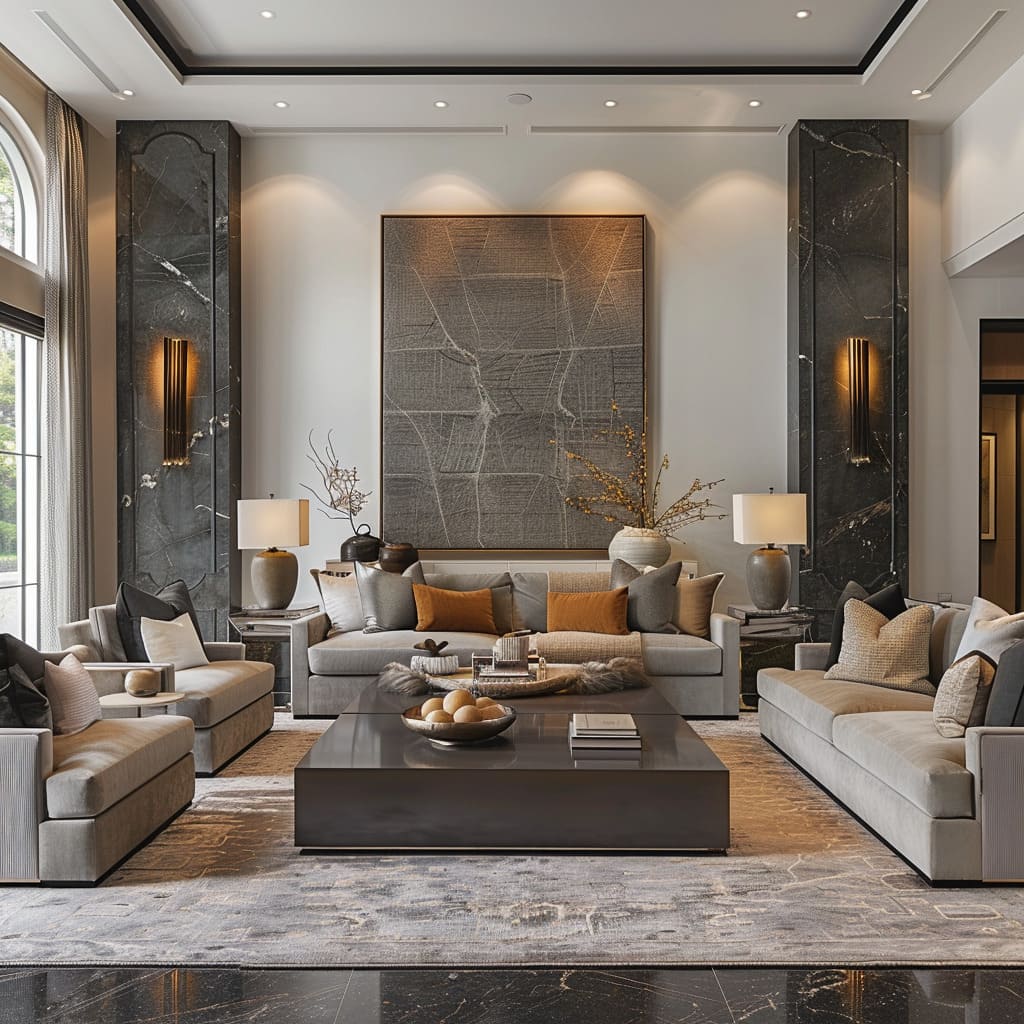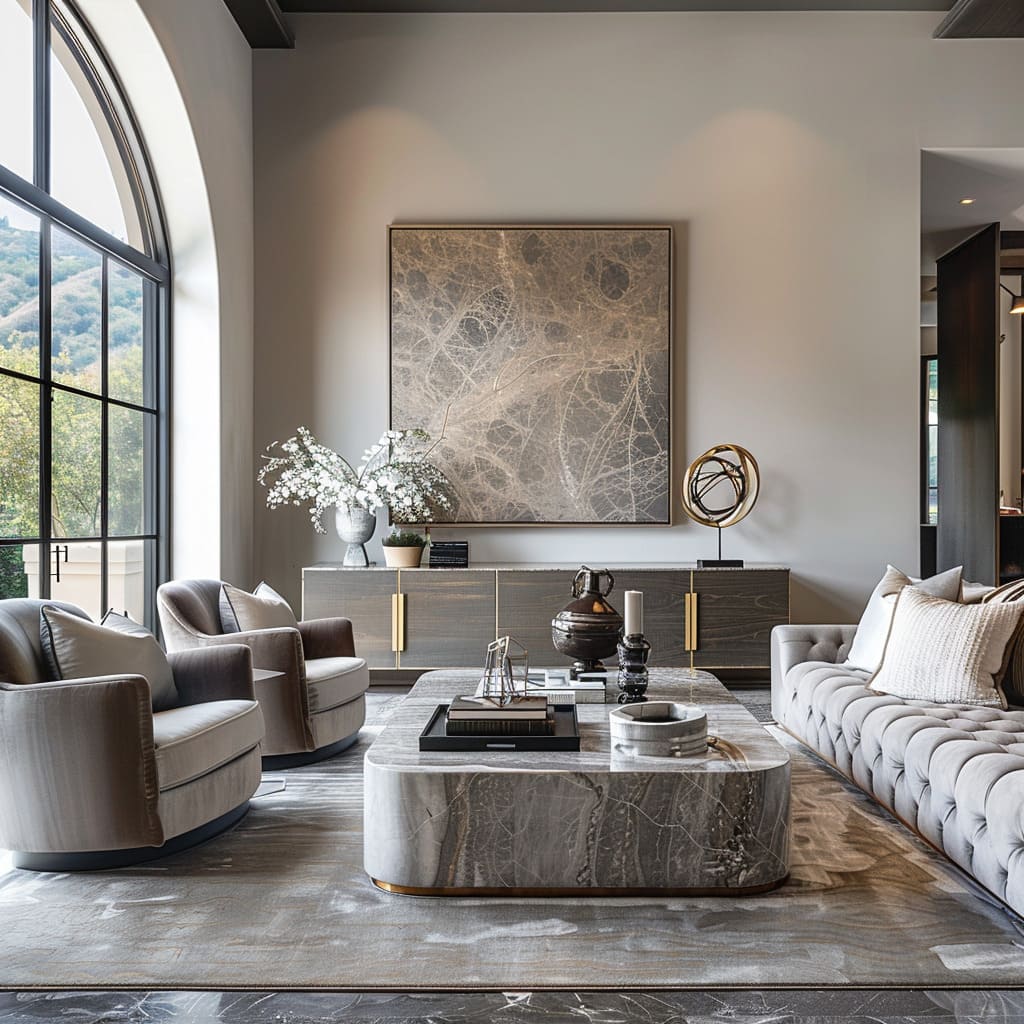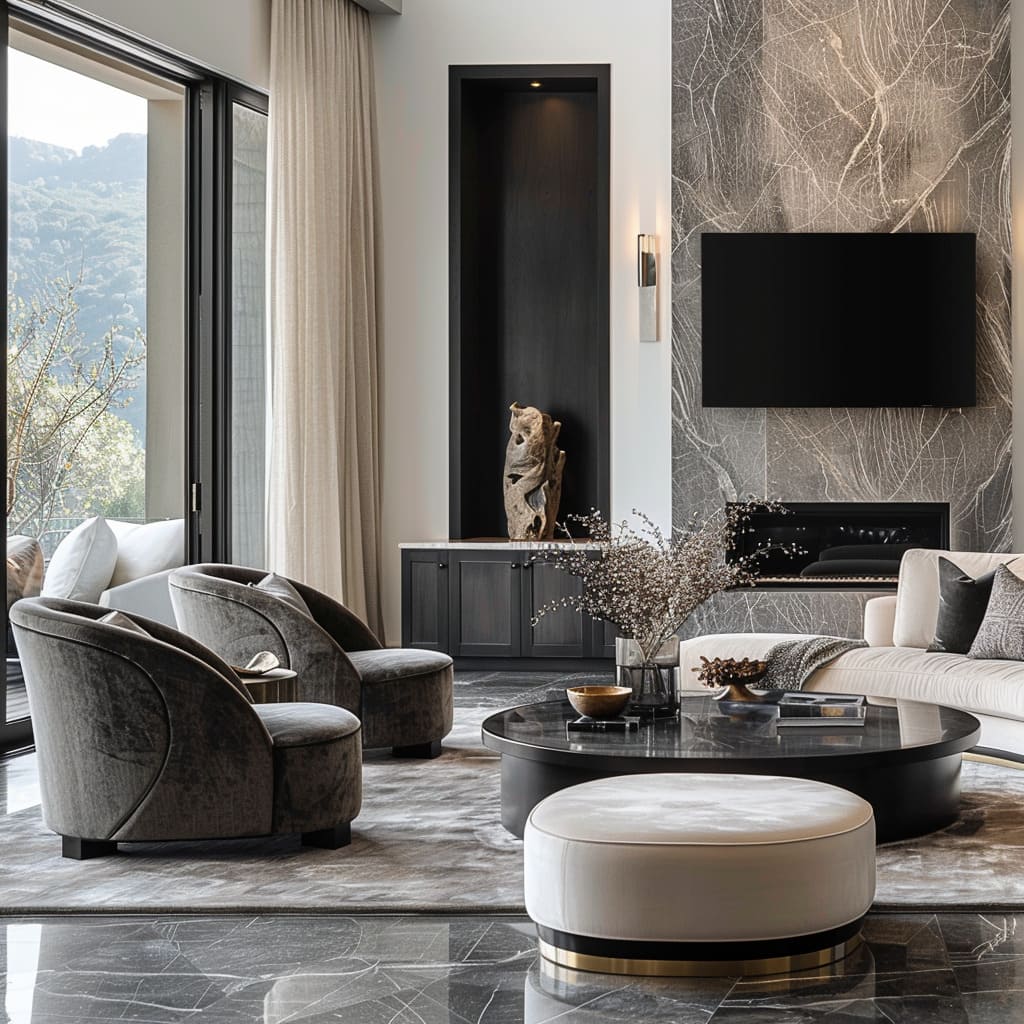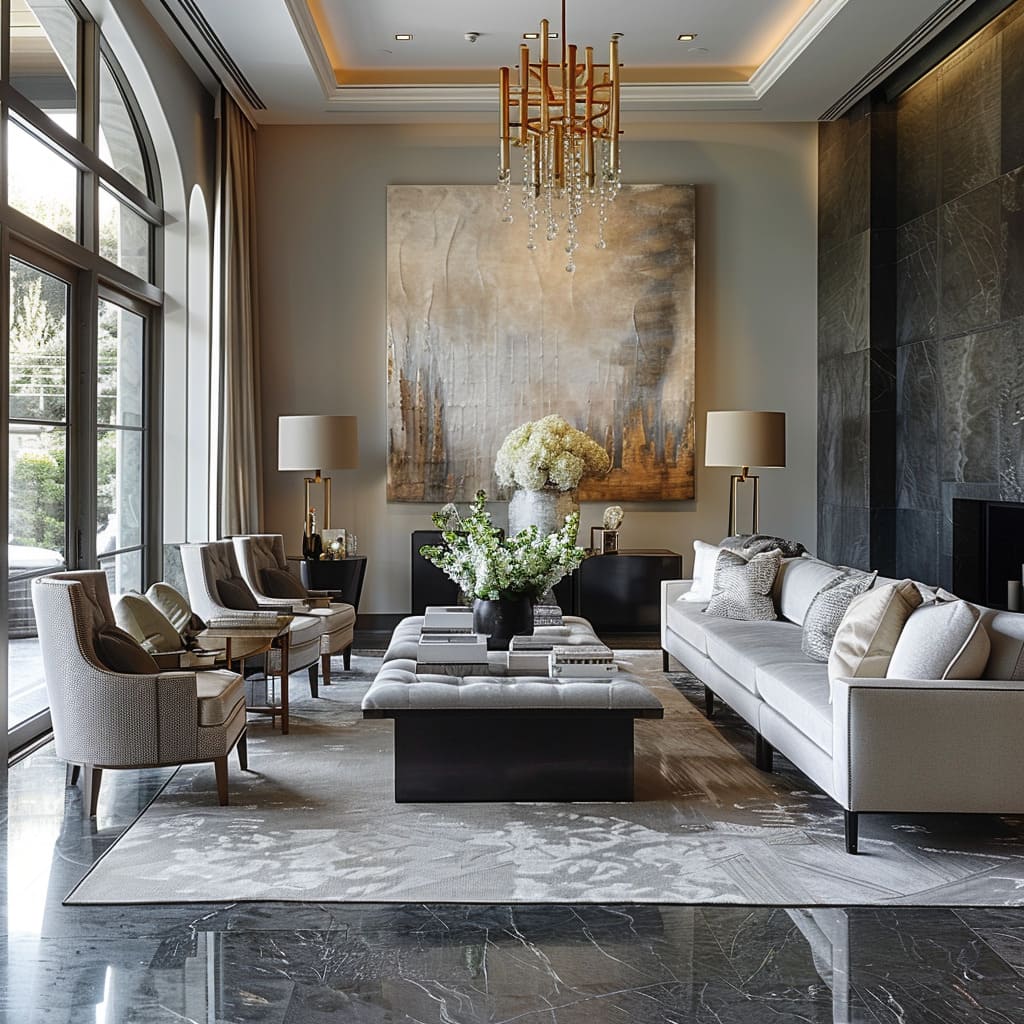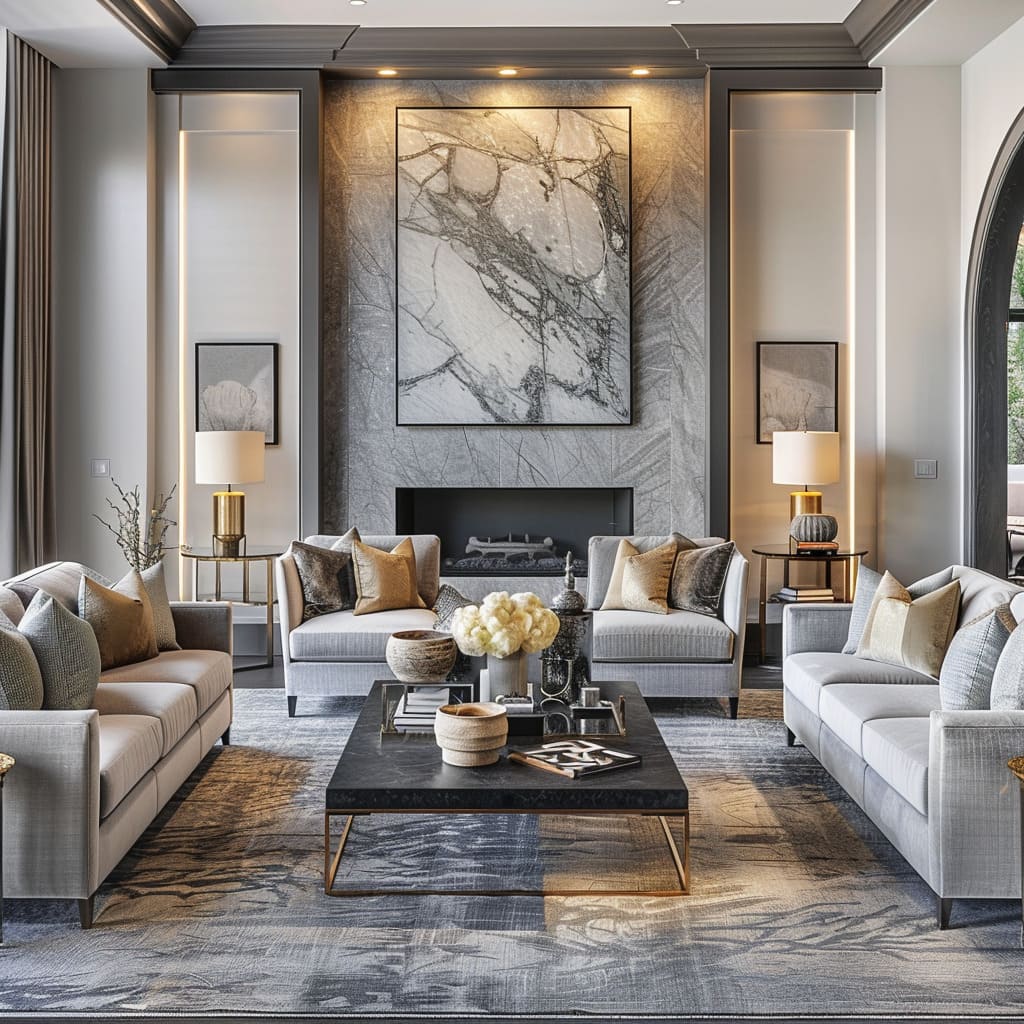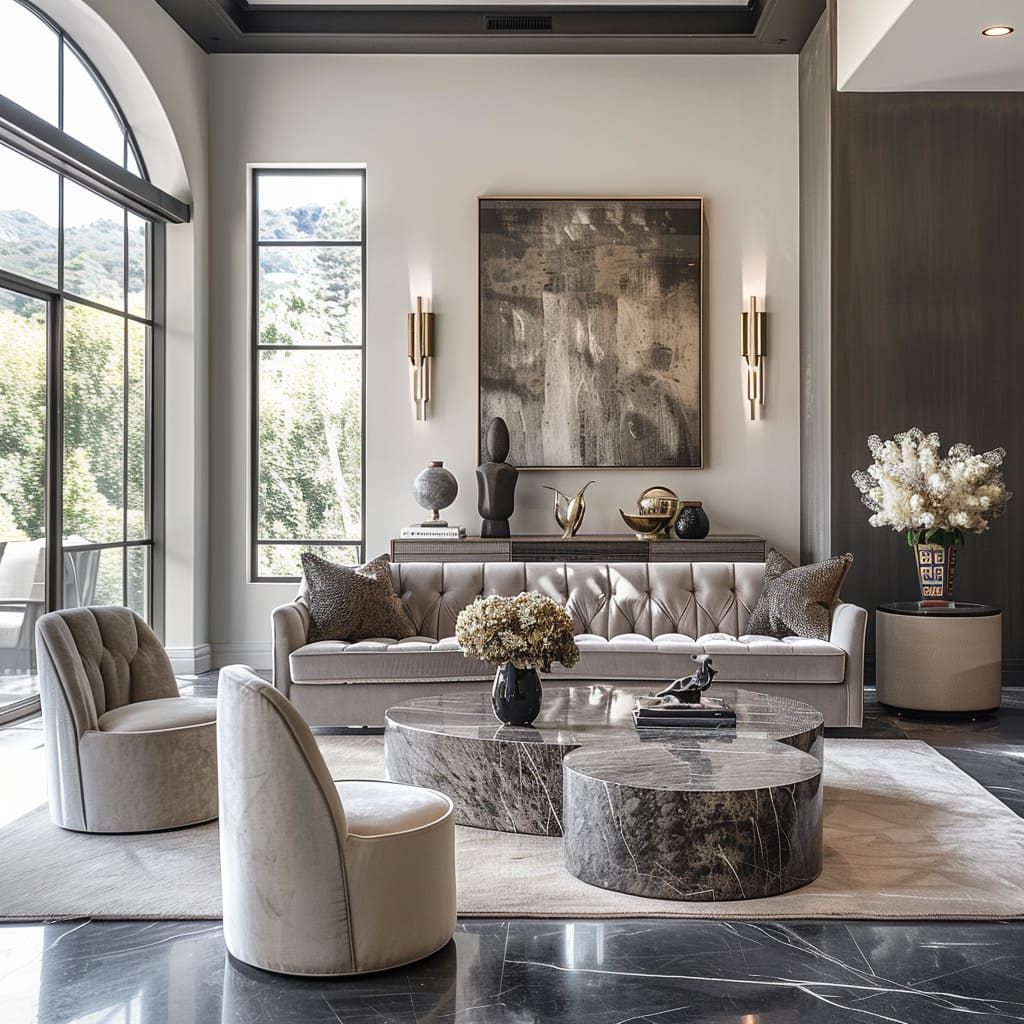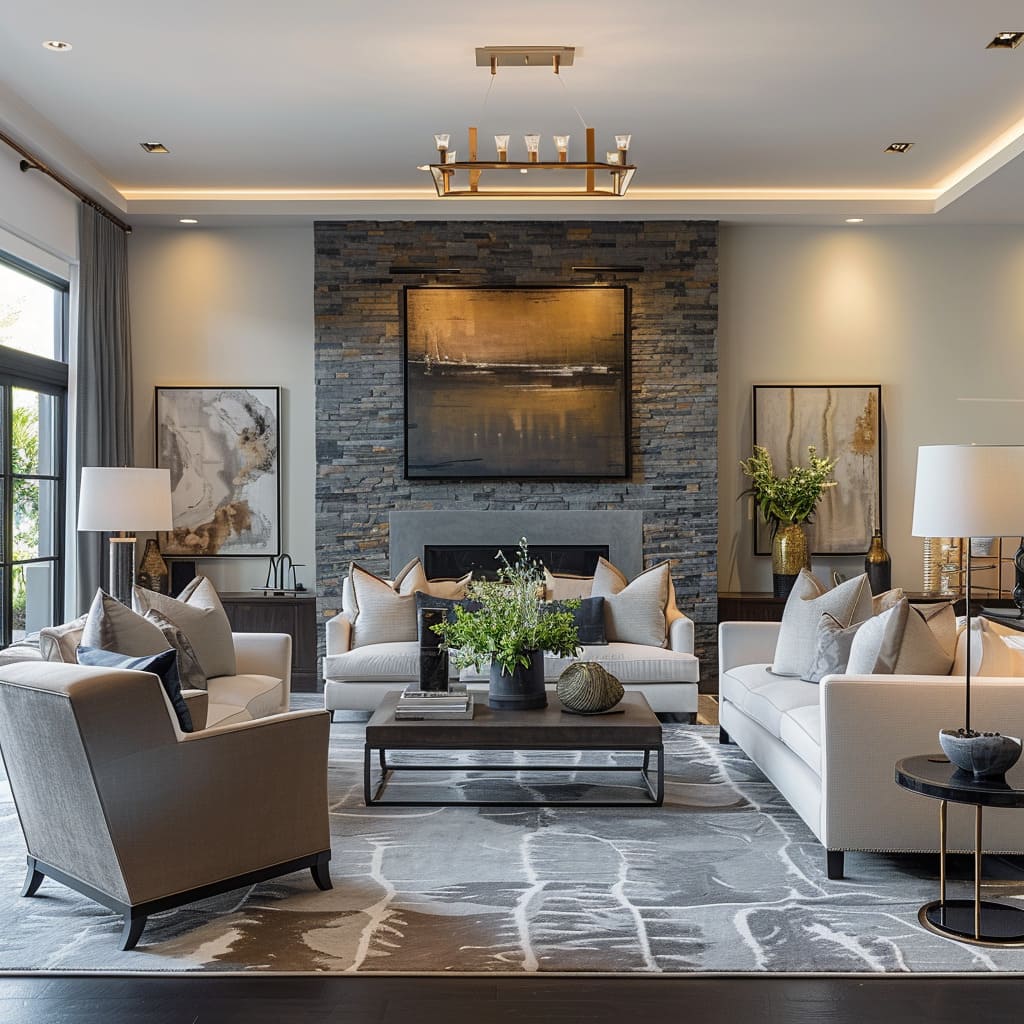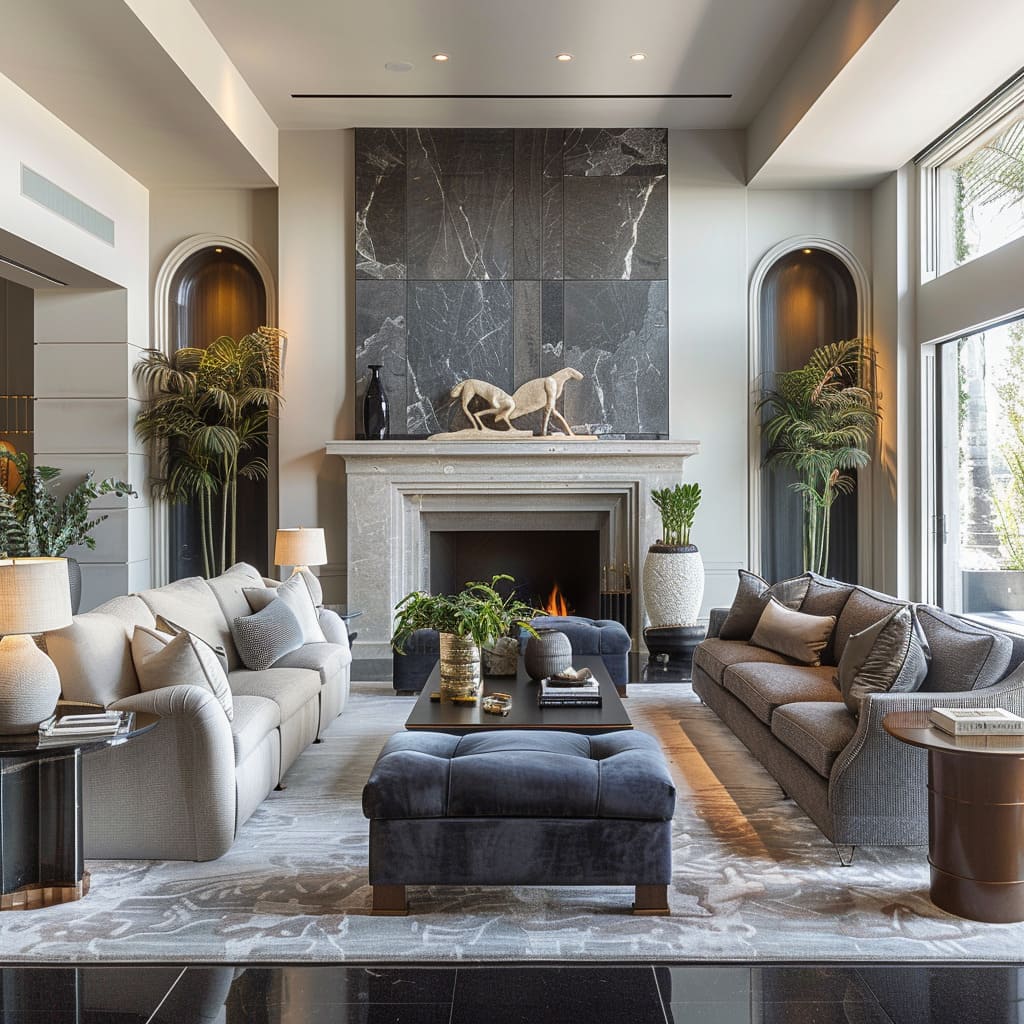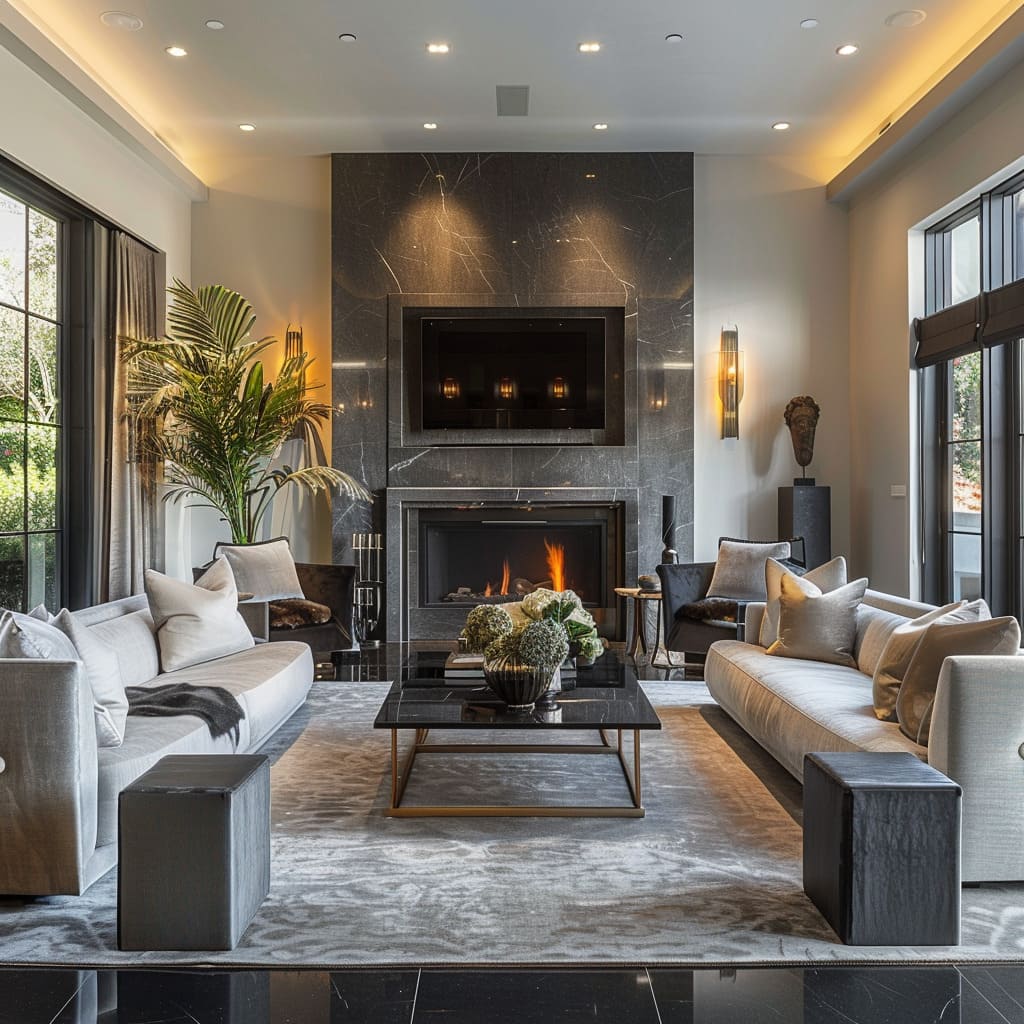In interior design, the blend of artistic flair and tailored functionality crafts spaces that are not just visually appealing but also resonant with individual identity. The article delves into the intricacies of design elements that form the bedrock of luxurious interiors.
These features, rich in craftsmanship and customization, transform mere spaces into reflections of personal style and elegance. From the architectural details that captivate our gaze to the bespoke elements that narrate a unique story, this article explores how each component harmonizes to orchestrate a living space that is simultaneously timeless and in vogue.
Architectural Features & Customization
The art of interior design transcends mere aesthetics, weaving together form and function to create spaces that are both inviting and impressive. Within this intricate tapestry of design, certain features stand out, serving as the cornerstones of a luxurious interior.
These elements, steeped in craftsmanship and customization, imbue the home with a unique identity. From the architectural nuances that draw the eye upwards to the tailored grace of bespoke fittings, each aspect contributes to the symphony of style that is both timeless and contemporary.
The following expanded discussion delves deeper into these pivotal characteristics, drawing insights from a selection of refined interiors that epitomize sophistication.
Architectural Detailing
This encompasses the masterful creation of detailed moldings, elegant cornices, and thoughtfully designed built-ins that serve as the backbone of interior architecture. One can observe the precision with which each cornice frames the ceiling, the way moldings add depth to the walls, and how built-ins are not merely storage solutions but integral parts of the spatial narrative, reflecting a storied tradition of skilled craftsmanship.
Dynamic Ceiling Treatments
Beyond their structural necessity, ceilings in these interiors are canvases for artistic expression. We see how recessed lighting is employed to cast a soft, ambient glow, creating a serene atmosphere, while coffered and tray ceilings add a sculptural dimension, turning an often-overlooked area into a focal point of grandeur and elegance.
Custom Window Treatments
Windows are dressed not just to filter light but to complement the room’s character. Luxurious fabrics are chosen for drapery, creating soft silhouettes against the natural light.
In some spaces, the treatments are tailored to provide privacy without sacrificing style, incorporating motorized blinds that blend seamlessly with the interiors when not in use.
Sophisticated Woodwork
Wood, with its inherent warmth and texture, is sculpted into exquisite paneling, trim, and detailing. The woodwork ranges from the subtle grain of sleek modern paneling to the robust outlines of more traditional styles, each adding a layer of natural elegance to the rooms.
This woodwork often harmonizes with furniture and flooring, creating a cohesive look that is both rich in heritage and modern in execution.
Visual & Aesthetic Impact
The dance of visual harmony and aesthetic appeal in interior design lies in the intentional selection and placement of key elements. A well-designed space captivates and engages, providing an experience that is both visually stimulating and deeply resonant.
The interplay of colors, materials, and forms are orchestrated to produce environments that are not only beautiful but also tell a story. Let’s further explore the nuances of visual and aesthetic impact in interior spaces.
Accent Walls
These are pivotal in anchoring a room’s design, drawing the eye and setting the tone for the space. The interiors reveal walls adorned with bold textures, intricate tiles, or distinctive stone work that command attention while also integrating with the surrounding palette.
The choice of materials can often introduce a new texture or sheen, offering a tactile experience that encourages interaction and engagement with the space.
Statement Art
Art becomes more than decoration; it is an expression of the room’s identity. In the provided examples, art pieces are selected not just for the beauty of the visuals, but for their size and the statement they make.
They serve as conversational centerpieces, whether they are abstract compositions that provoke thought or more representational pieces that tell a story or celebrate the natural world.
Impactful Scale
Decor items are meticulously chosen to resonate with the scale of the room, ensuring harmony and proportion. Large open spaces feature substantial furniture and bold art, while more intimate areas use smaller, delicate items that still carry a sense of importance.
This deliberate scaling fosters a sense of balance that is both aesthetically pleasing and functional.
Selective Use of Color
Colors are picked with a discerning eye, complementing the overall theme without overwhelming it. The spaces utilize a palette where hues are employed to draw out the depth of textures and to highlight architectural features, sometimes adding a pop of contrast or using more subdued tones to soothe and calm.
Selective Use of Glass
Glass elements range from tabletops to sculptural pieces that reflect and refract light. The transparency of glass can make spaces feel more open and connected, while its reflective quality adds a dynamic aspect that changes with the lighting and viewing angle.
Statement Lighting Fixtures
Lighting is not simply functional; it is an essential part of the room’s aesthetic. The chosen fixtures act as modern sculptures, drawing the eye upward and complementing the other design elements.
The designs display fixtures with metallic finishes that reflect light, as well as more matte fixtures that absorb light, adding depth and interest to the spaces.
These elements are the brushstrokes of a larger masterpiece, each contributing to the creation of spaces that are as distinctive as they are inviting. In these interiors, visual and aesthetic impact is not left to chance; it is a result of deliberate choices that coalesce to form environments that not only embody the vision of the designer but also enhance the lives of those who dwell within.
Material Quality & Texture
In the realm of interior design, the tactile experience is as paramount as the visual. Material quality and texture bring a tangible depth to an environment, inviting not only the eye but also the touch.
They can elevate a space from the ordinary to the extraordinary, contributing to an overall sensation of luxury and refinement. From the smooth coolness of marble to the warm grain of wood, these materials connect us to the world and ground us in the space.
As we delve into the importance of material quality and texture, we explore how these elements shape not only the aesthetics but also the very atmosphere of the interior.
Elevated Neutrals
The sophisticated neutral palette serves as the foundation of the space, providing a calming backdrop that exudes understated elegance. These neutrals are far from monotonous; they are carefully chosen for their subtle variances in tone and texture, creating layers that play with light and shadow.
The result is a serene and chic environment that feels both contemporary and timeless.
High-Quality Materials
Luxury interiors demand materials that are as durable as they are beautiful. Marble countertops and hardwood floors are not only impressive in their visual impact but are also crafted to stand the test of time.
The chosen materials reflect the light differently, providing a diverse sensory experience, and their natural patterns ensure that each installation is unique.
Well-Curated Collections
Every item on display is selected with intention, contributing to the narrative of the space. Whether it’s an assortment of artisanal pottery, vintage books, or avant-garde sculptures, these collections tell a story of the occupant’s taste and personality.
They are arranged to create focal points that draw the viewer in for a closer look, adding a layer of personalization and interest.
Designer Collaborations
Working with designers yields one-of-a-kind pieces that are tailored to the space. These collaborations often result in furnishings or decor that are not just functional but also form a distinct point of visual intrigue.
The crafted pieces bear the hallmarks of designer ethos, with attention to line, form, and material that set them apart from mass-produced items.
In these interiors, the harmonious blend of textures and the commitment to material excellence combine to form a setting that is both opulent and inviting. The careful curation of materials and decor speaks to a lifestyle that values both aesthetics and quality, creating spaces that are meant to be lived in and appreciated for their craftsmanship and design.
Furniture & Layout
The composition of a room’s furnishings and their arrangement is a symphony, with each piece contributing its unique tone to the overall experience of the space. A considered approach to furniture selection and layout speaks to a design ethos that values both the individual beauty of each piece and the collective narrative they create.
This interplay of form, function, and style within a space requires a keen eye for detail and an intimate understanding of the space’s intended ambiance. In the next sections, we’ll explore the subtle art of selecting and arranging furniture that both fits and elevates the spaces they inhabit.
In high-end interior design, the curation of furniture and its strategic placement are done with precision and artistic intent. The result is a living space that not only serves functional needs but also delights the senses and reflects the nuanced tastes of its inhabitants.
Mixed Period Furniture
In the eclectic blend of old and new, each piece of furniture tells its own story. Contemporary sofas may sit beside antique coffee tables, creating a dialogue between different eras.
The juxtaposition of sleek modern lines with the ornate details of classic pieces generates a rich, layered aesthetic that defies the constraints of time, lending a sense of sophistication and history to the space.
Tailored Fit
Furniture that appears custom-designed for a particular space can transform the mundane into the sublime. This approach sees sofas contoured to the precise dimensions of a living room, shelving that accentuates the height of the walls, and tables that fill a space without crowding it.
Each piece is a testament to the idea that design should feel inherently right, as though the room and its furnishings have evolved together.
Attention to Proportion
A harmonious balance between furniture and the room’s architecture is crucial for creating a cohesive space. This involves considering the scale of each piece relative to the room size and ceiling height, ensuring that nothing feels too large or too diminutive.
The result is a sense of order and tranquility, with each item contributing to a well-composed whole.
Functionality & Integration
The essence of truly remarkable interior design lies not only in its visible splendor but also in its ability to incorporate elements of functionality that complement and enhance the living experience. In this realm, design transcends mere decoration and becomes an integrated part of daily life, combining form with purpose in ways that are both ingenious and aesthetically pleasing.
It’s the subtle alignment of practicality with elegance that makes a space not only beautiful to behold but also a joy to inhabit. The following passages delve into the seamless integration of storage, reflective surfaces, and nature within the interiors, revealing how each contributes to a harmonious and efficient home environment.
Discreet Storage Solutions
Storage becomes an art form when it’s woven into the fabric of the room’s design. Shelving units blend into wall treatments, drawers are tucked into unexpected nooks, and cabinetry conforms to the architecture of the room so closely that it becomes almost indistinguishable from the design elements themselves.
Such storage solutions maintain the aesthetic integrity of the space while providing essential functionality, keeping belongings organized and out of sight, yet easily accessible.
Smart Use of Mirrors
Mirrors serve a dual purpose they are decorative features that also amplify light and create an illusion of expanded space. Strategically placed, they reflect the room’s interior and capture views, adding depth to the space.
Mirrors are particularly effective in smaller or darker rooms, where they can be positioned to catch natural light and brighten the area, or in larger rooms to create interplay between different parts of the space.
Curated Outdoor Views
The lines between the indoors and outdoors blur when the view becomes a living painting on the wall. Windows and glass doors are designed to frame the outside scenery, carefully aligning the interior design with the natural landscape.
The result is a living space that changes with the seasons and the time of day, offering a dynamic backdrop that contributes to the room’s ambiance.
Through the thoughtful integration of these elements, the spaces we inhabit are transformed. They become extensions of our lifestyles—effortlessly functional, pleasing to the senses, and in harmony with their surroundings.
This approach to design elevates the concept of home, making it not just a place to reside, but a reflection of a well-considered life.
The journey through the realms of architectural features, aesthetic choices, material quality, and thoughtful layout in interior design culminates in a symphony of space that is both functional and enchantingly beautiful. It is evident that these elements, when woven together with meticulous care and creative vision, do more than just fill a room—they craft an experience.
The article does not only sheds light on the pillars of sophisticated design but also celebrates the transformative power of interior decor to create environments that echo the inhabitants’ essence while standing as a testament to the artistry of design. In these spaces, every detail is a stroke of intention, crafting not just rooms, but sanctuaries of elegance and personal expression.


